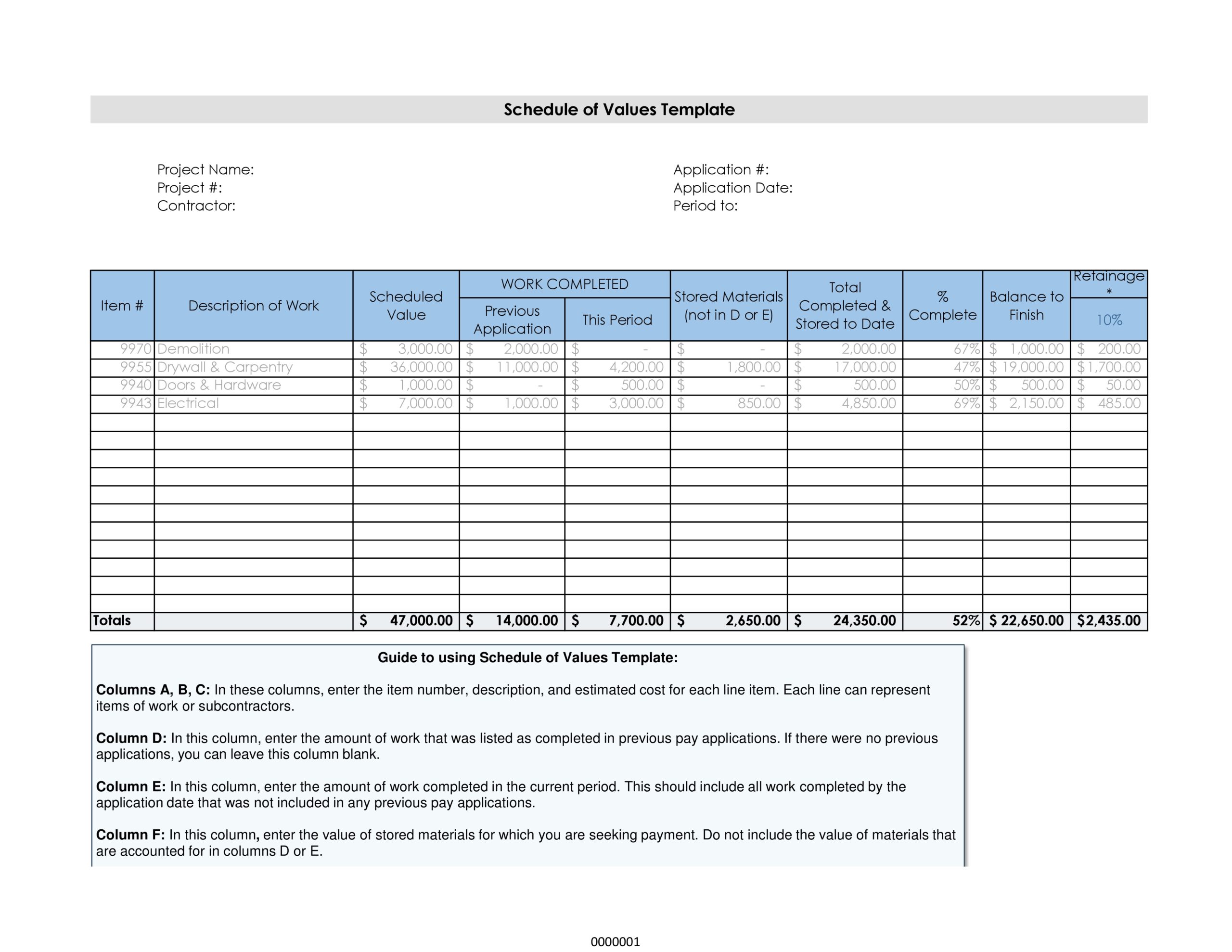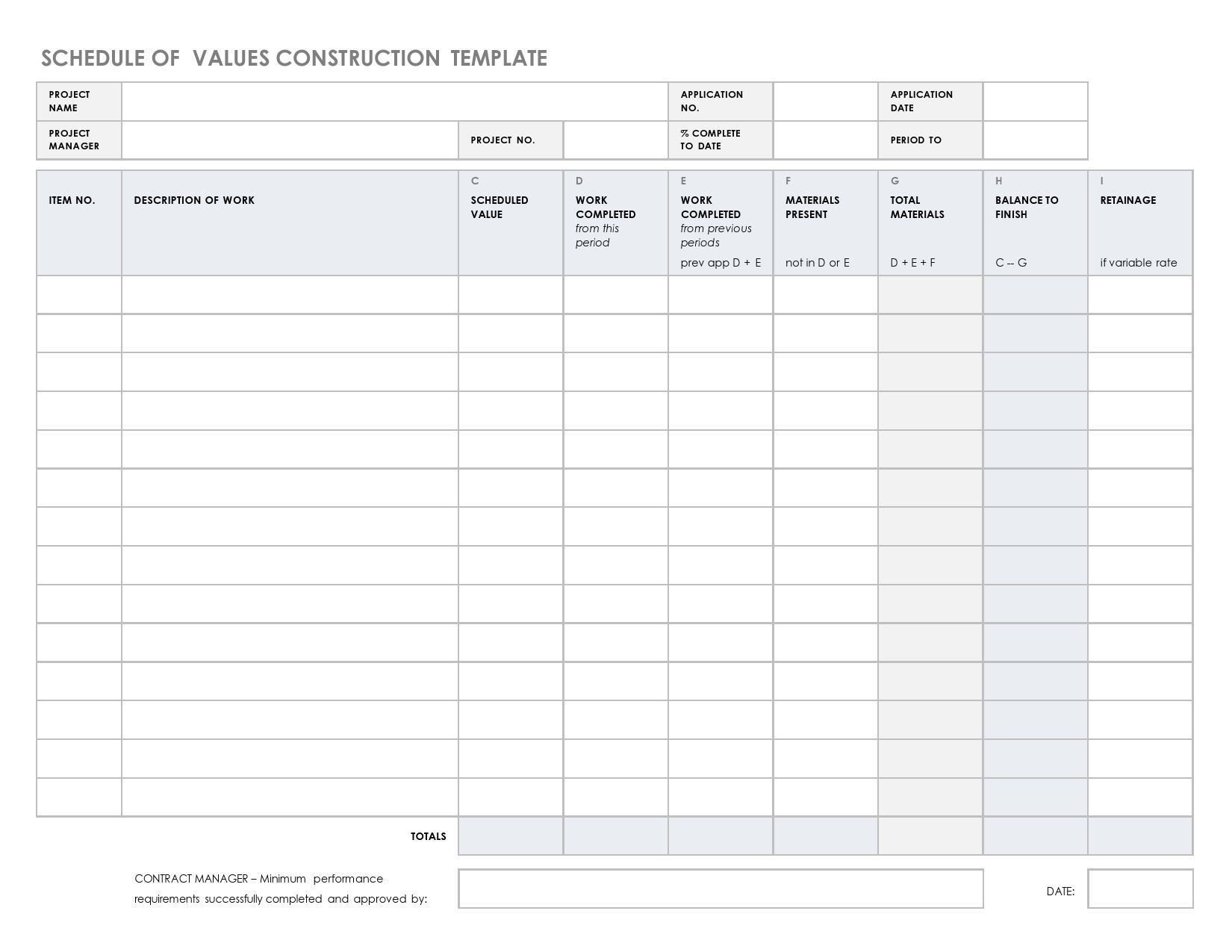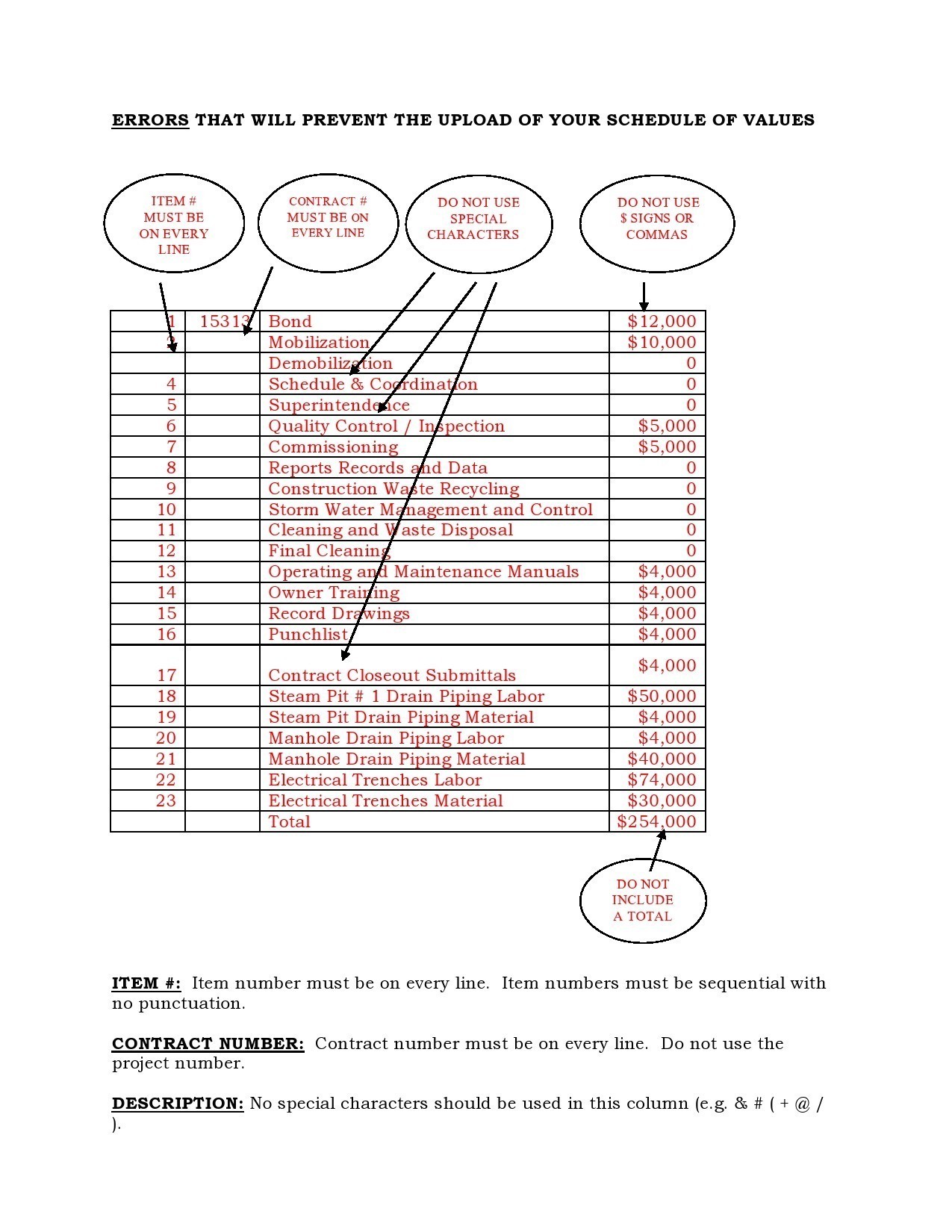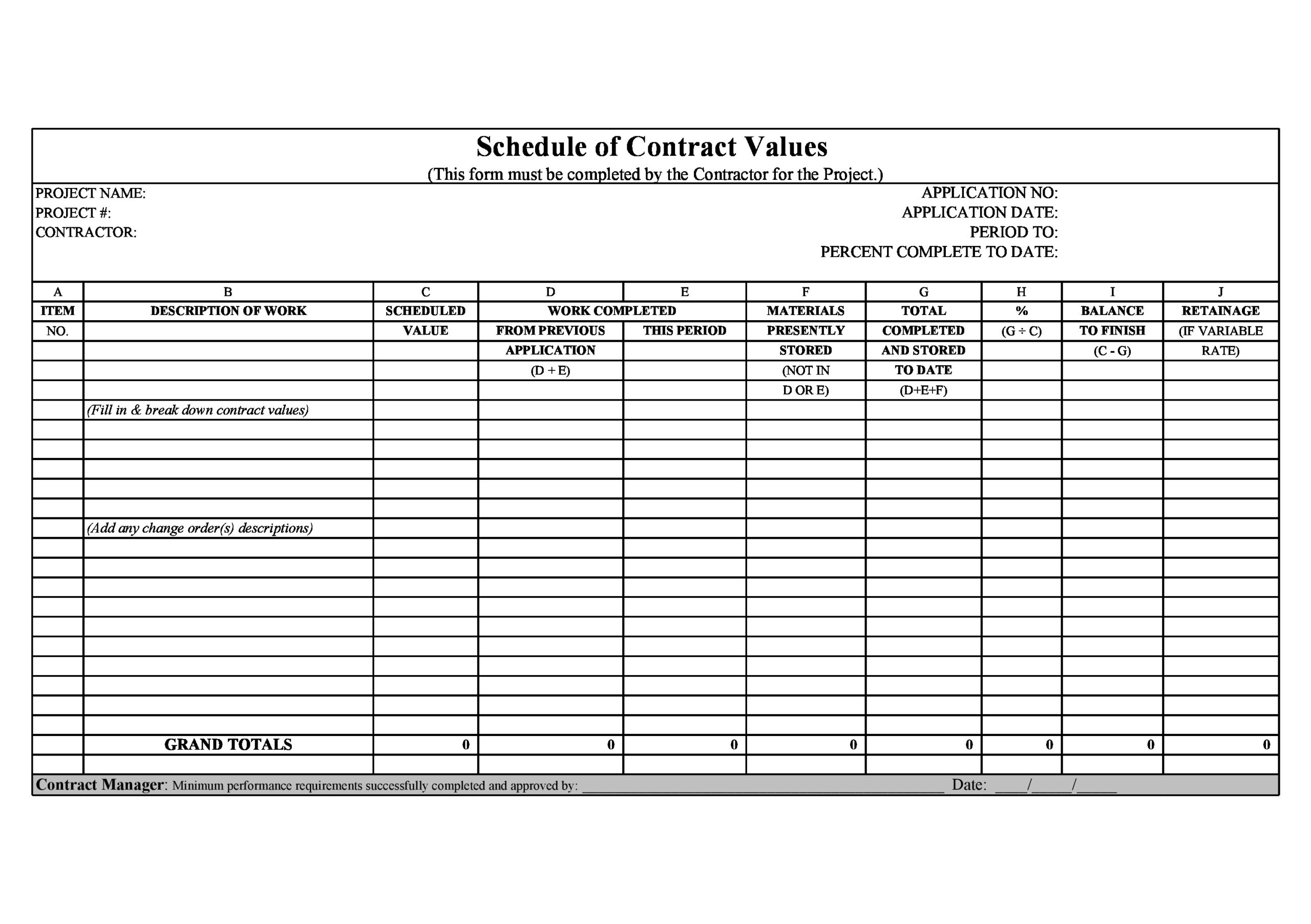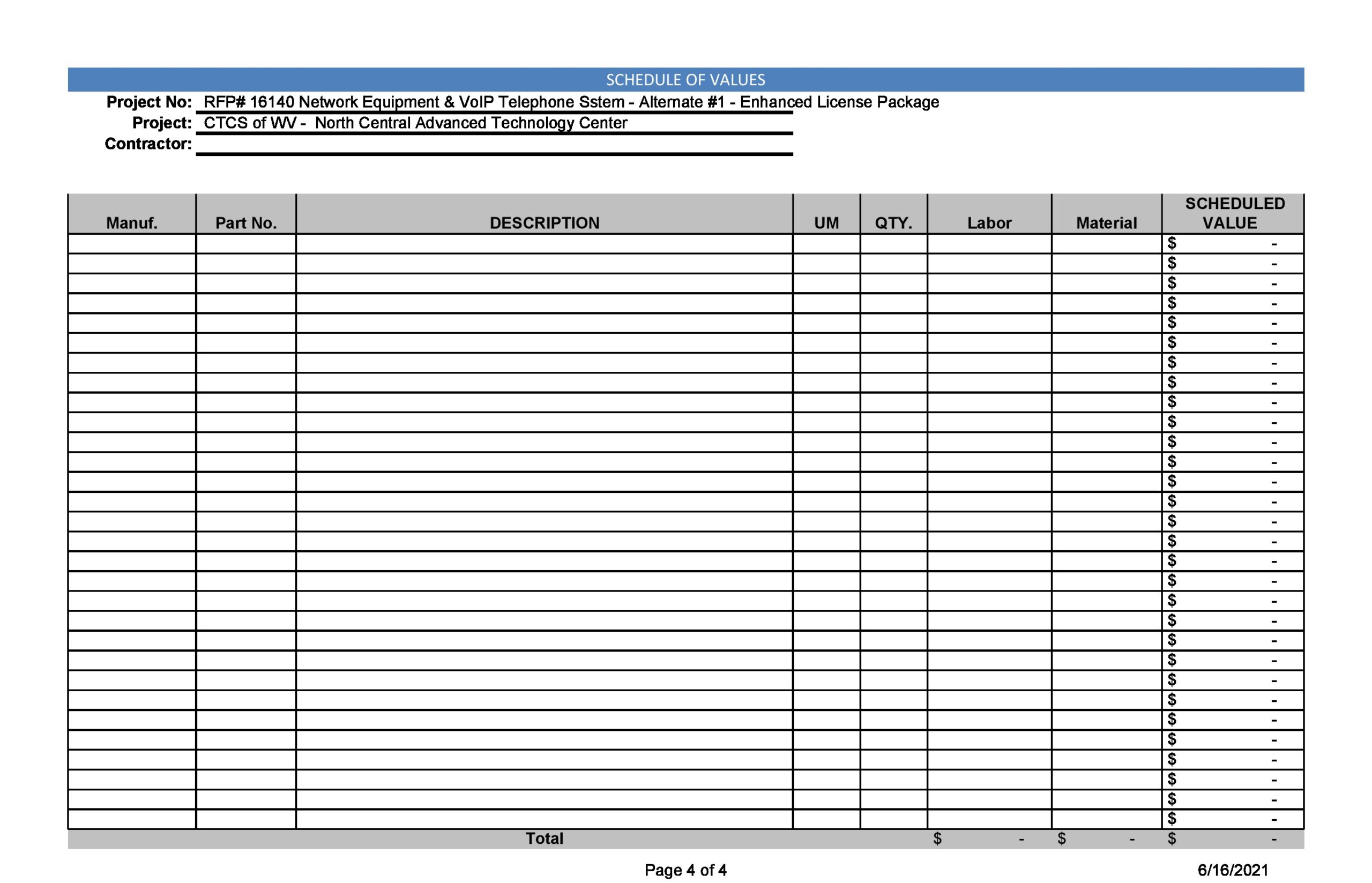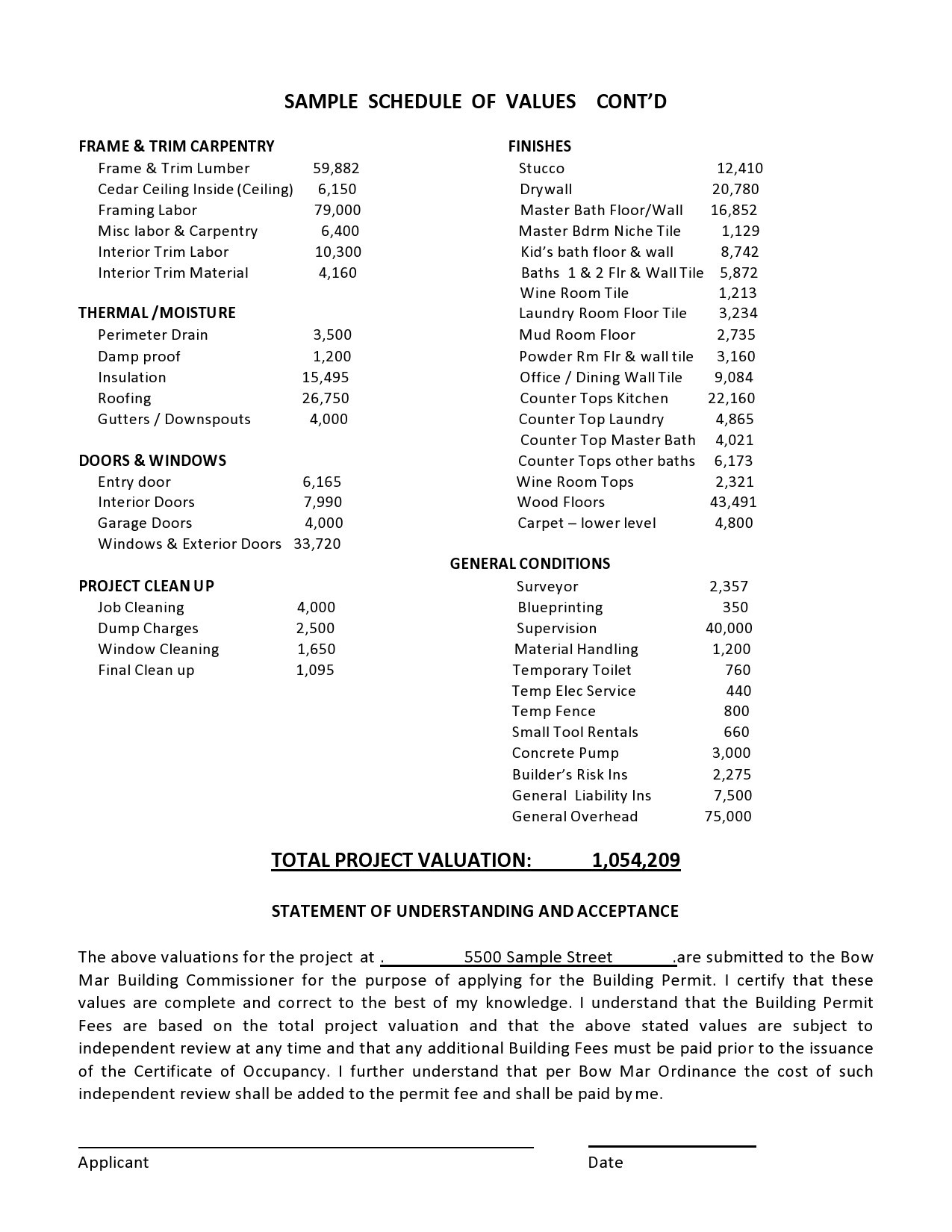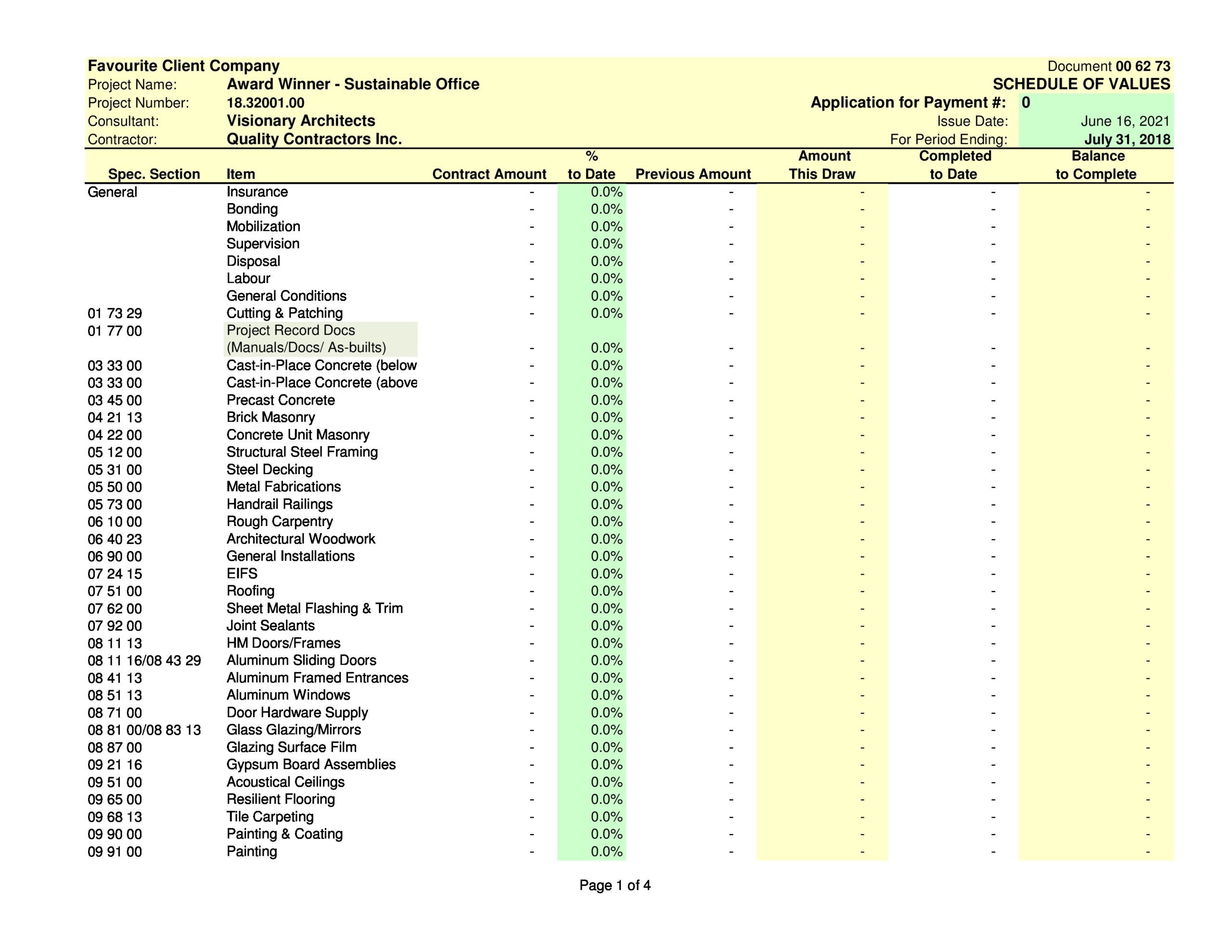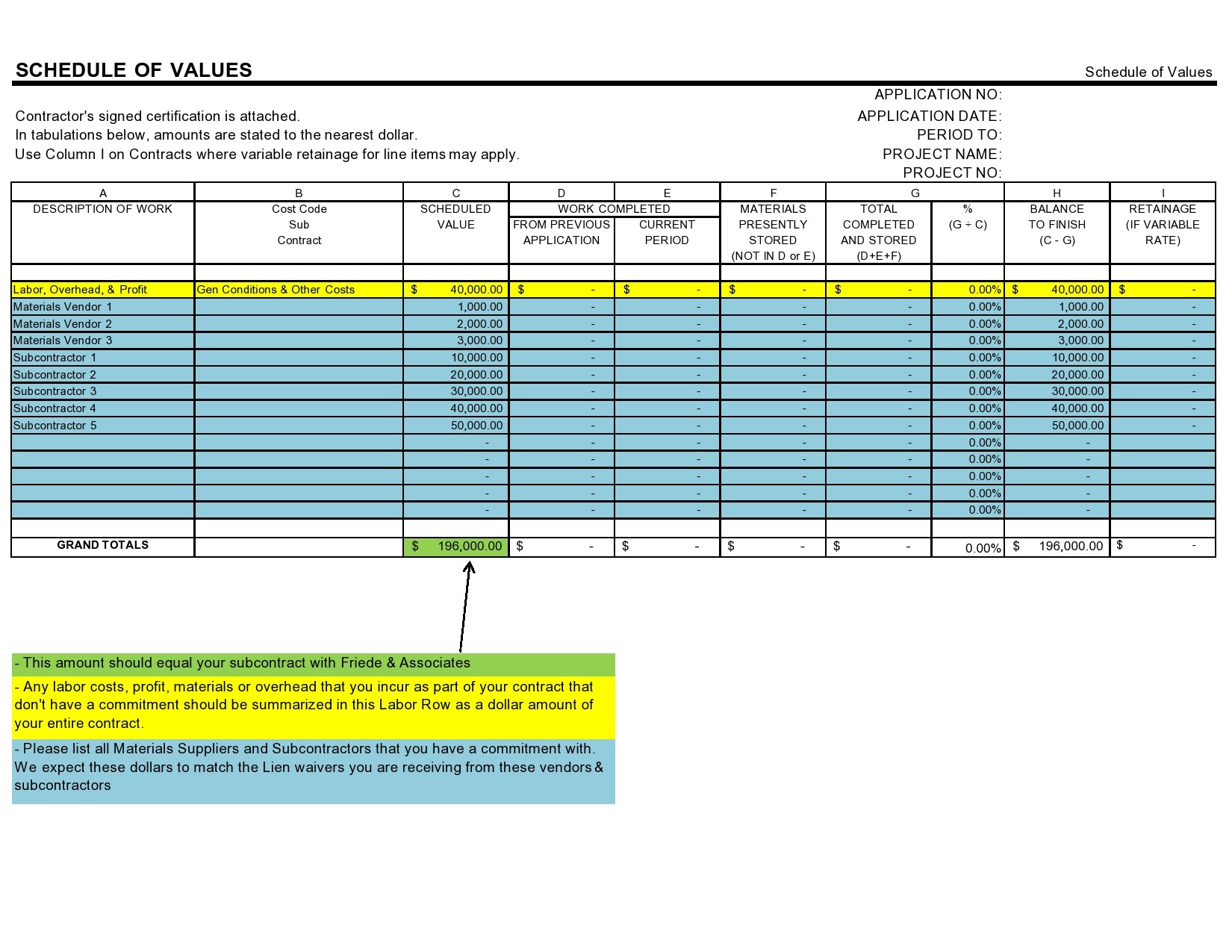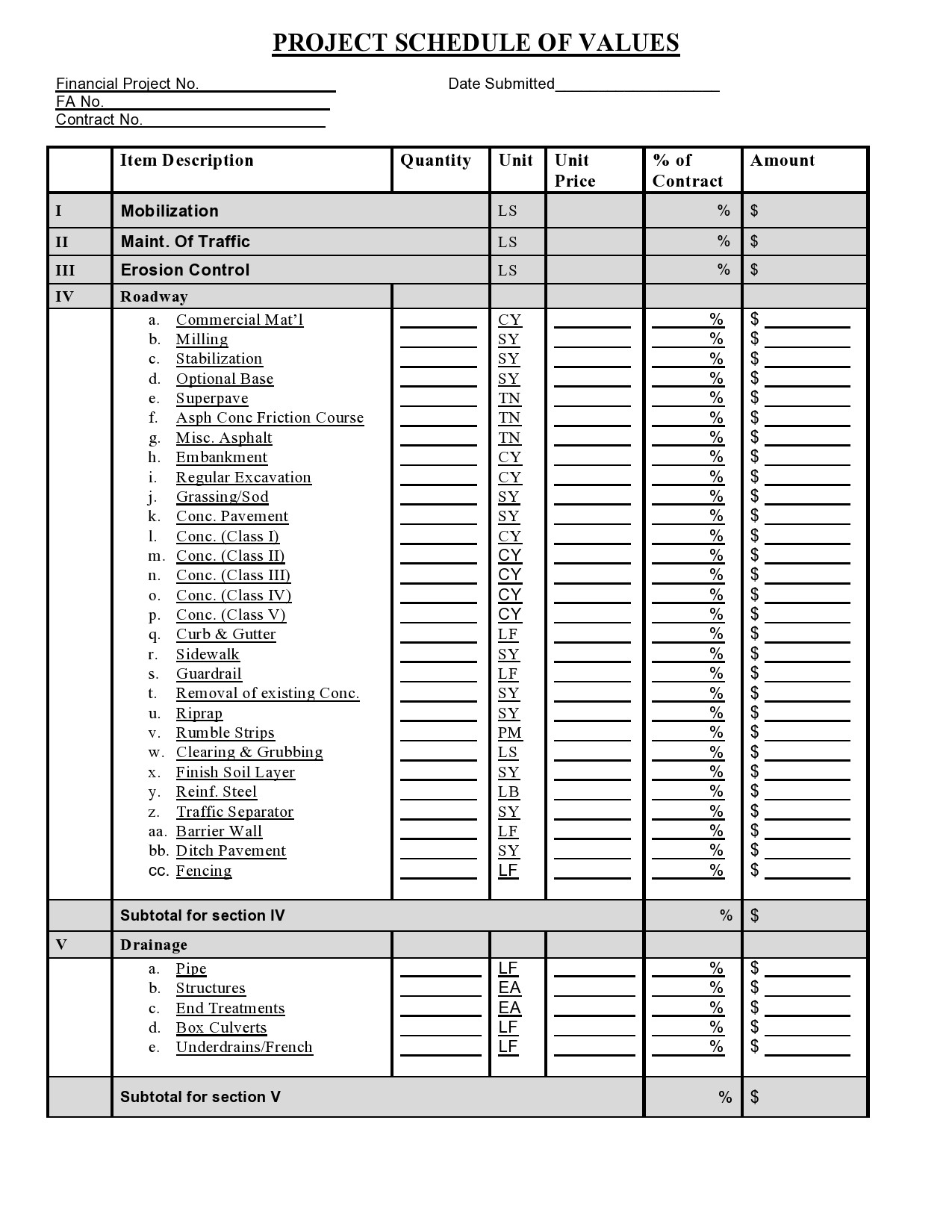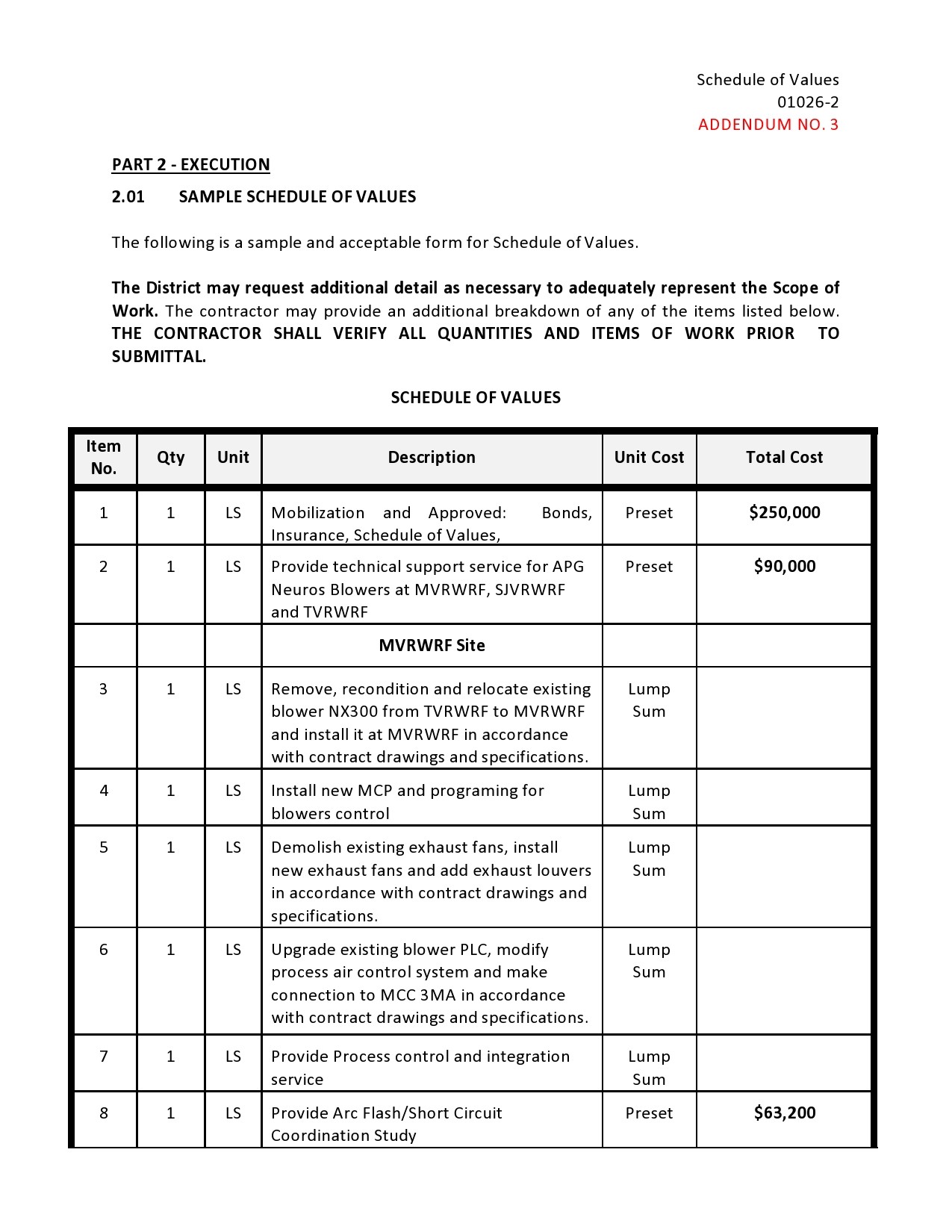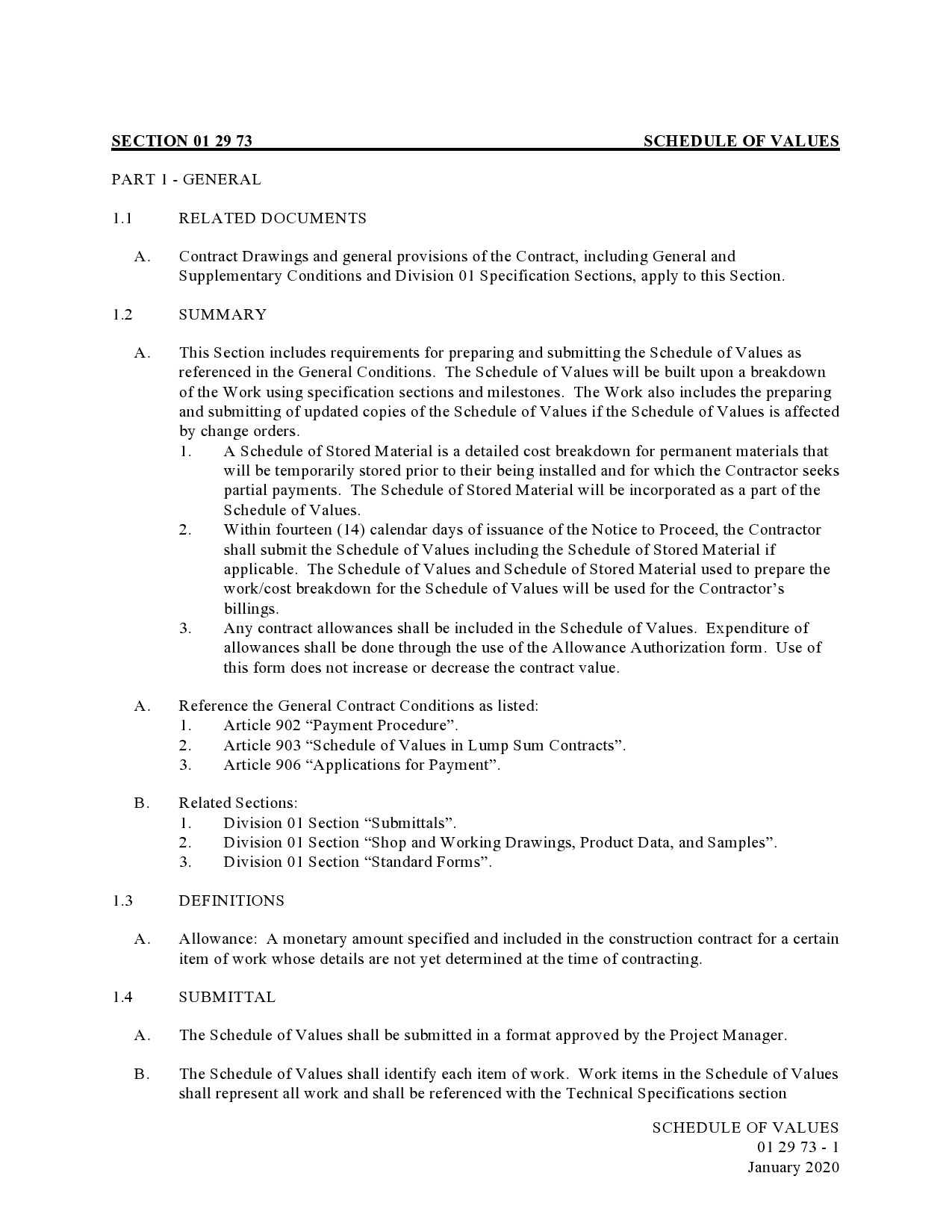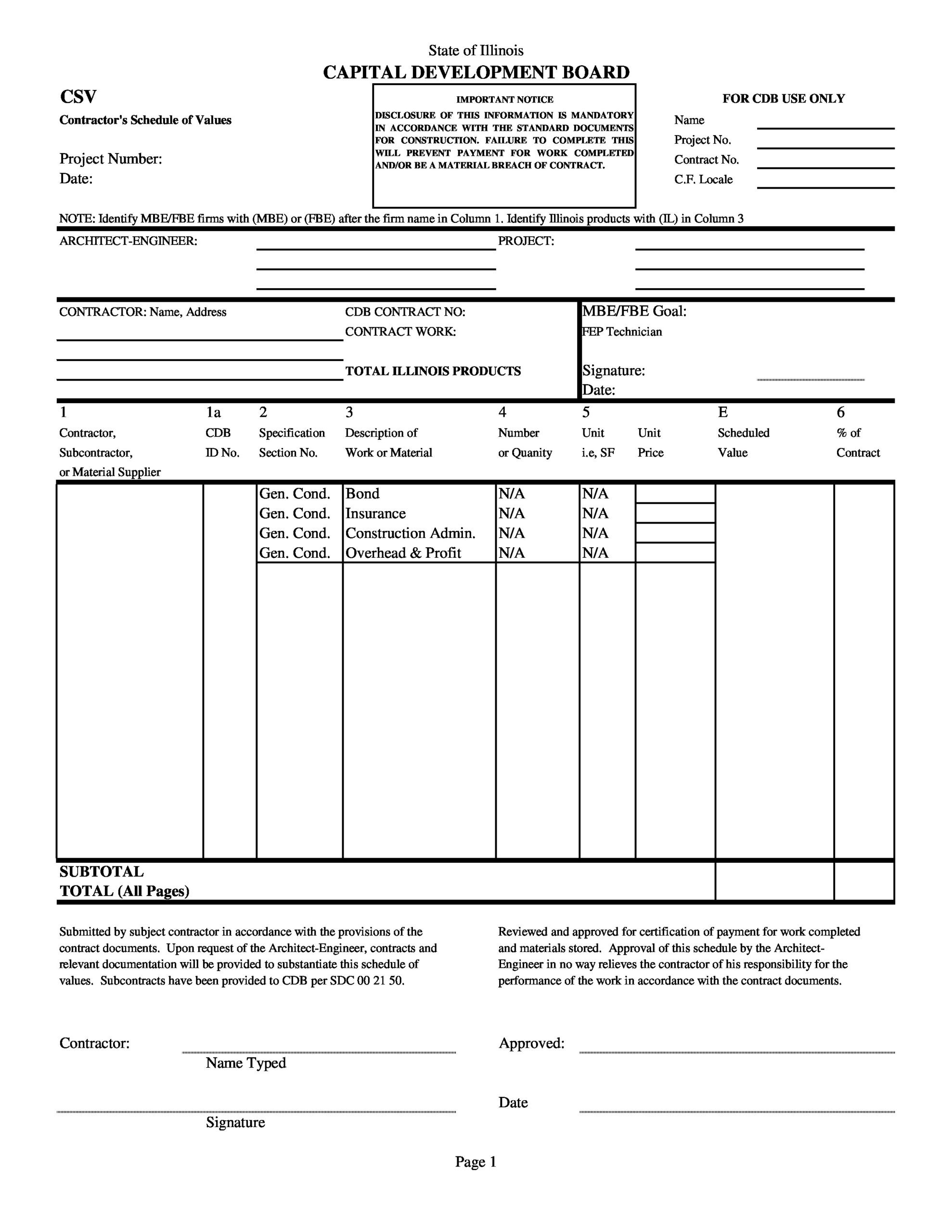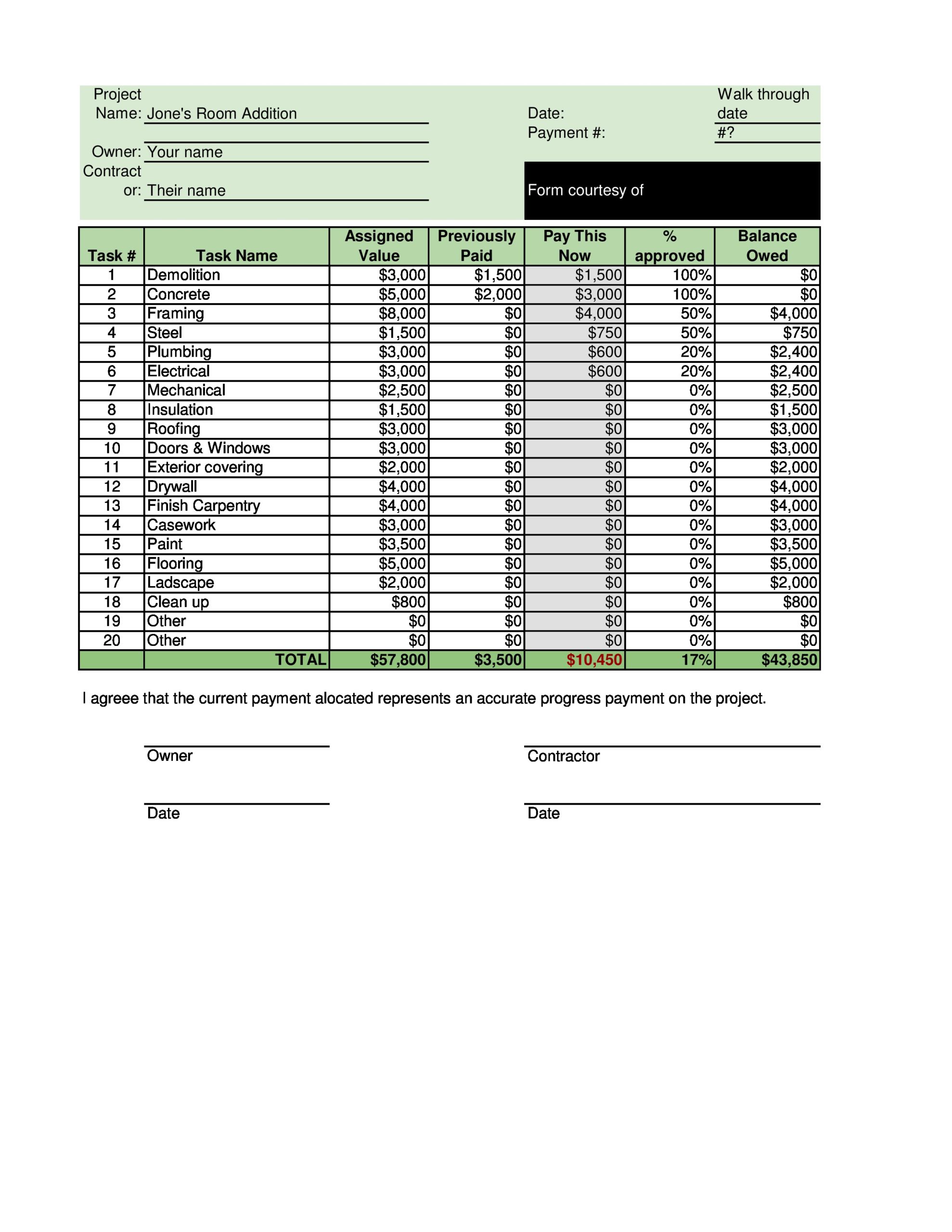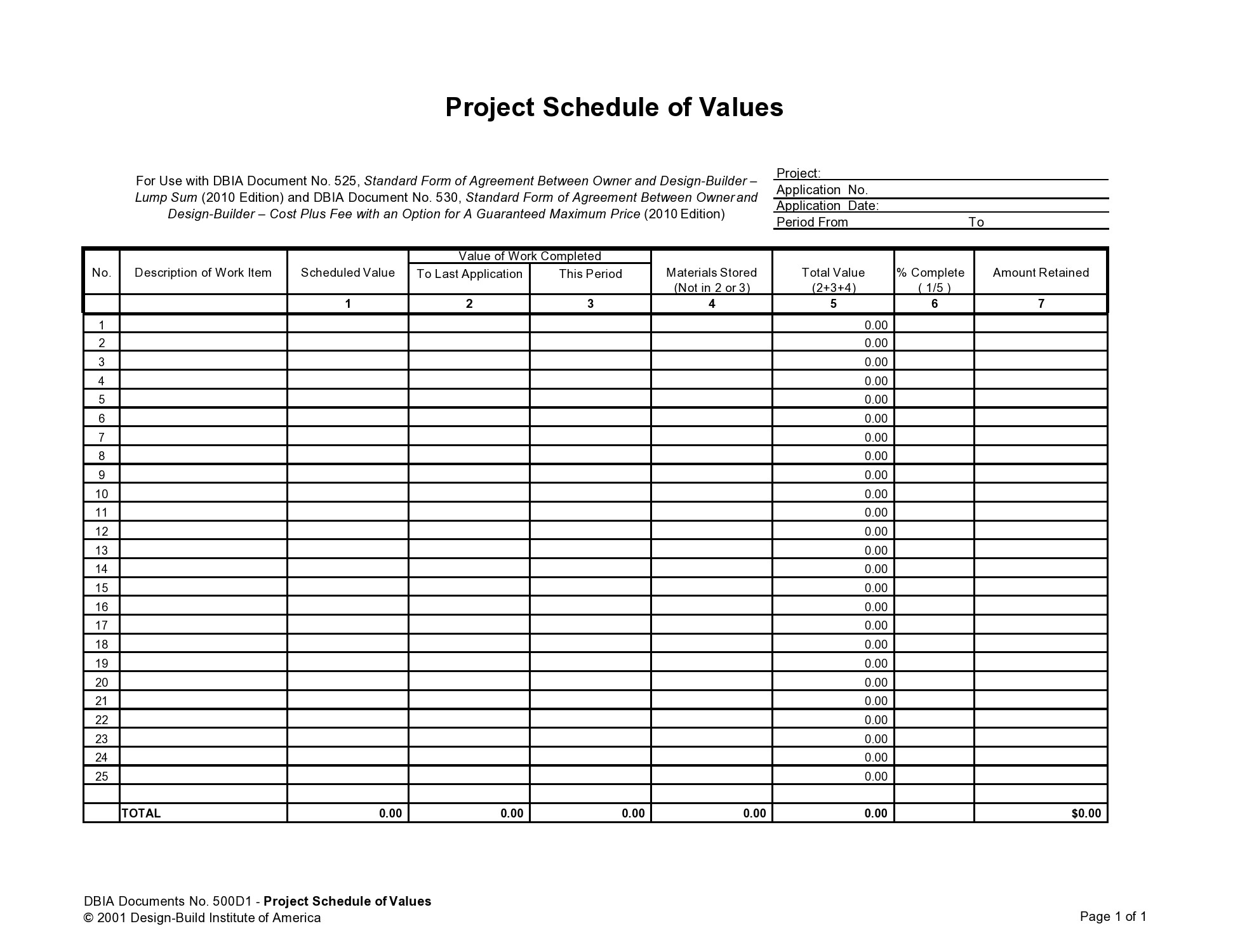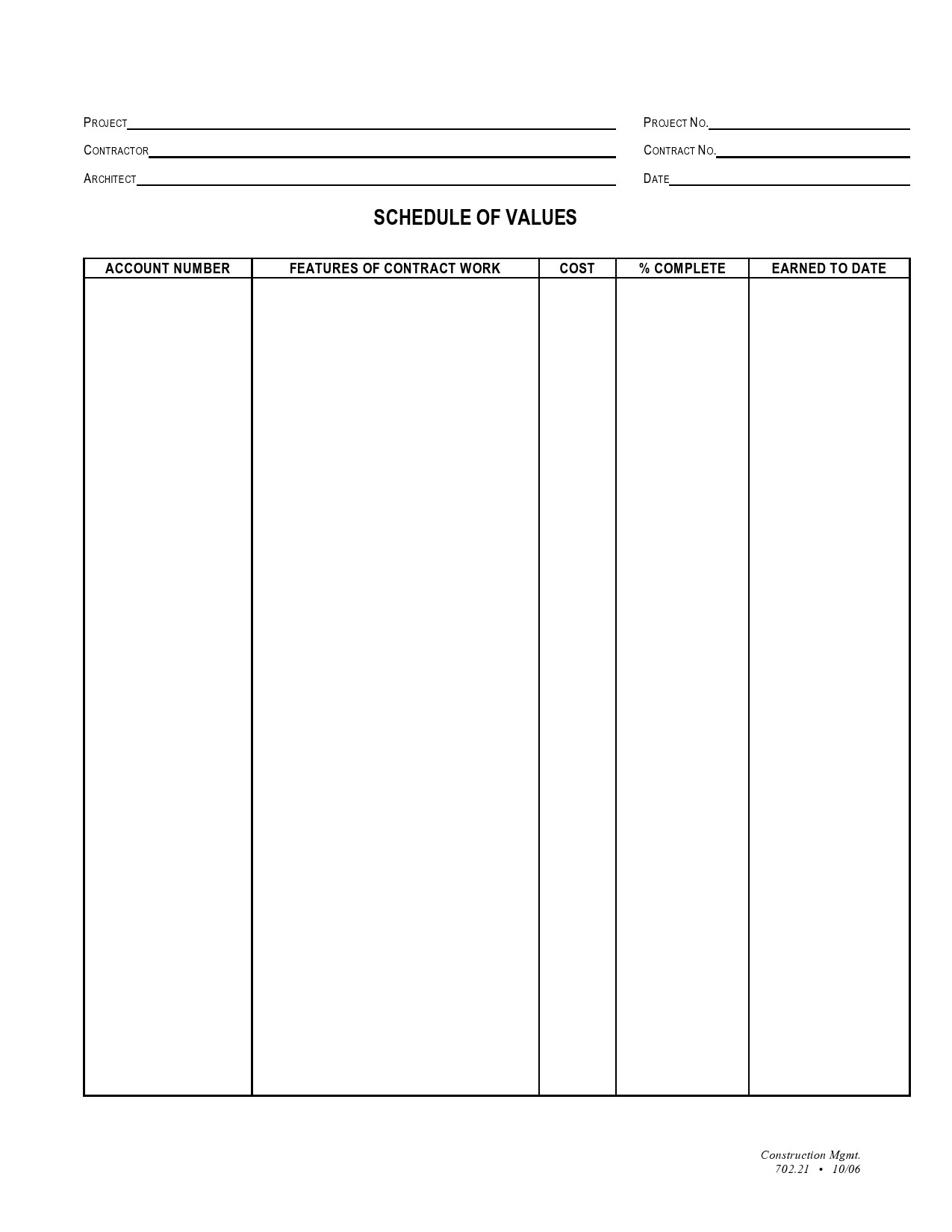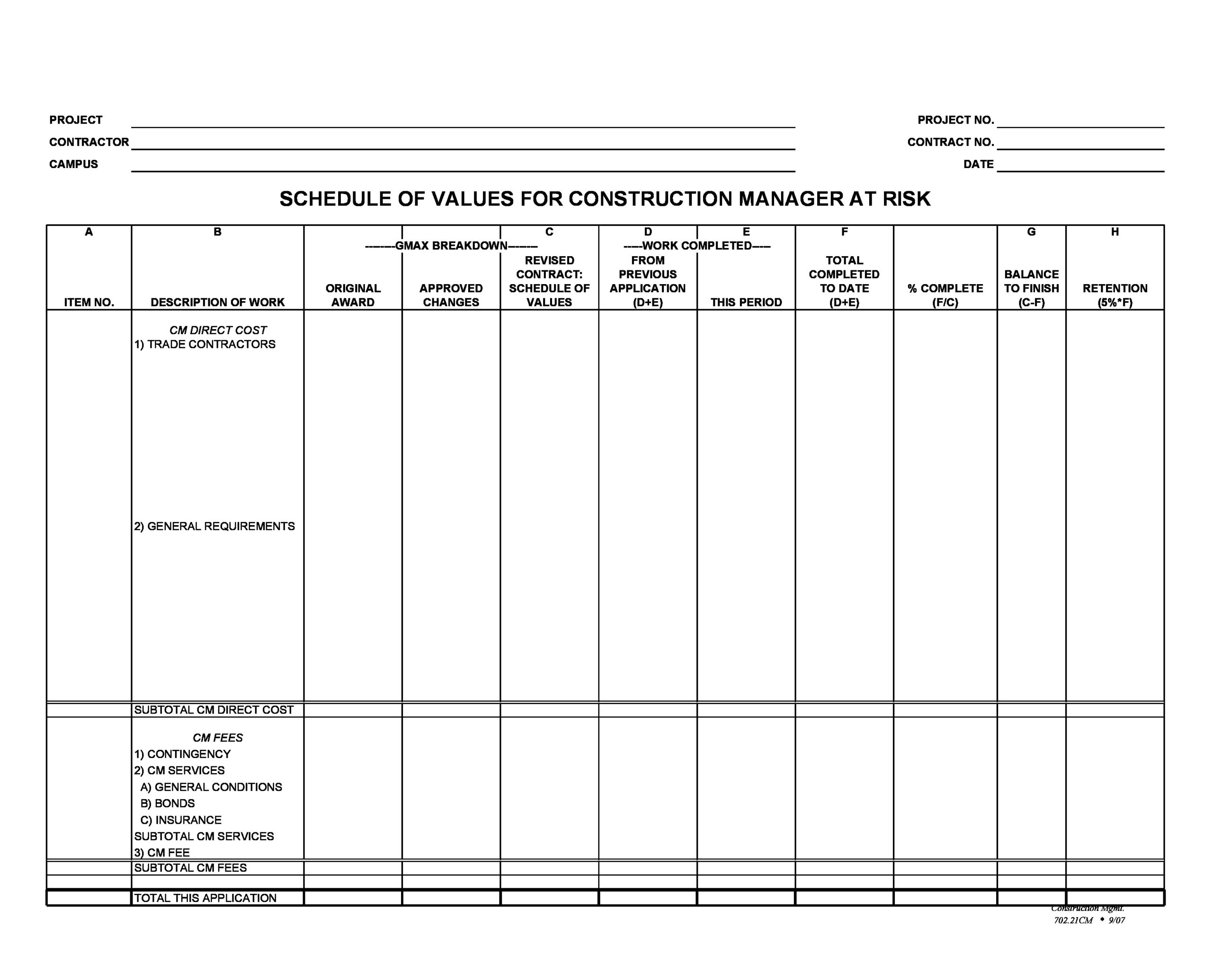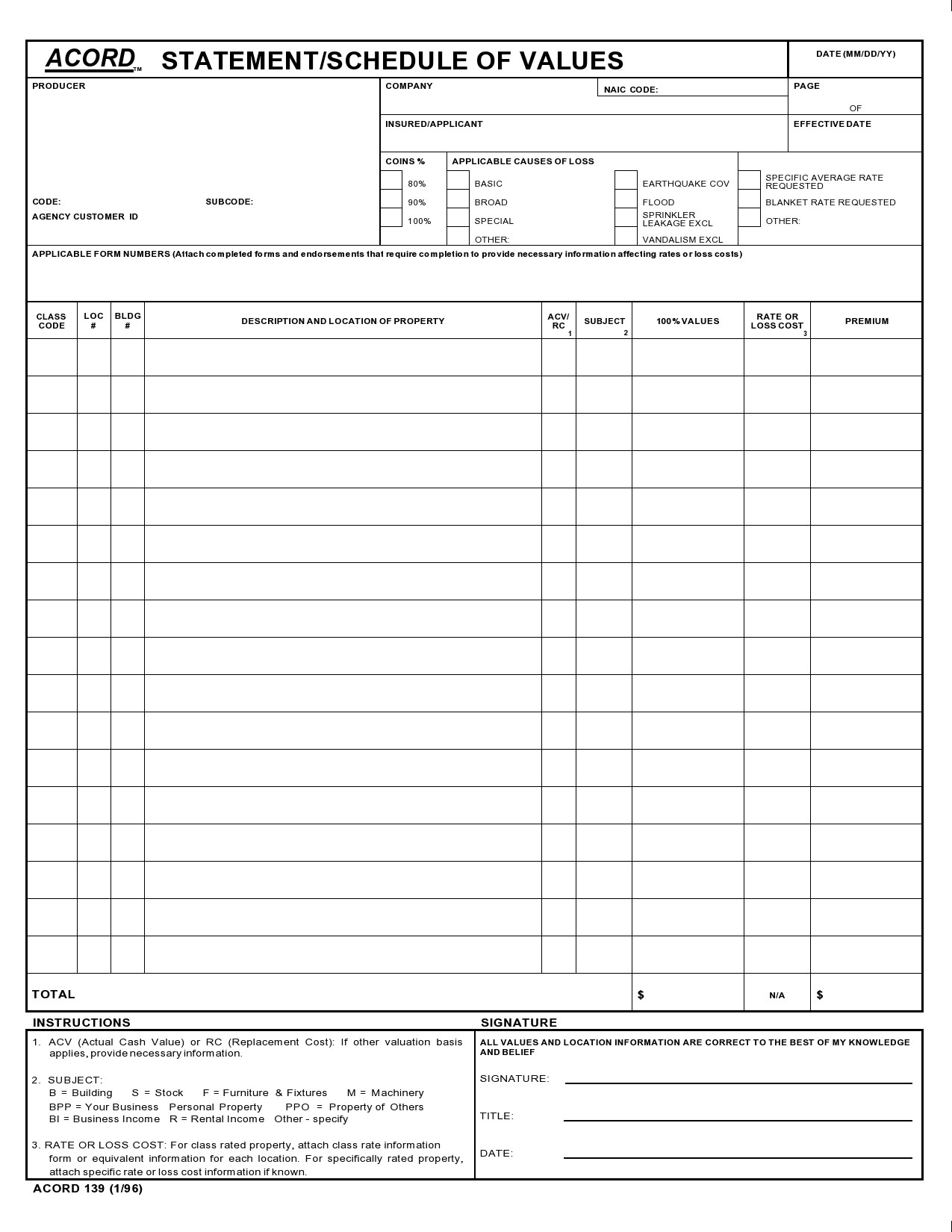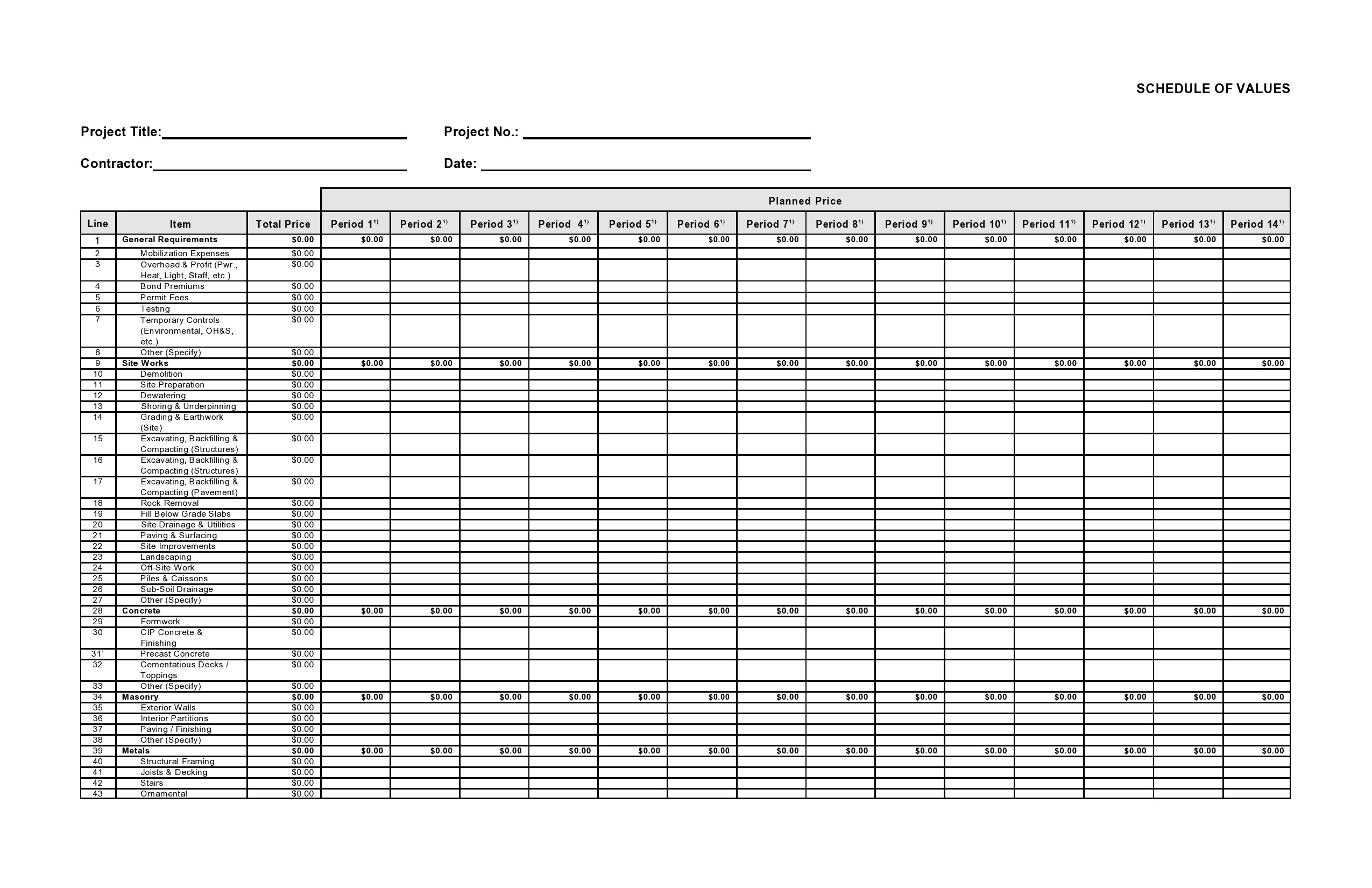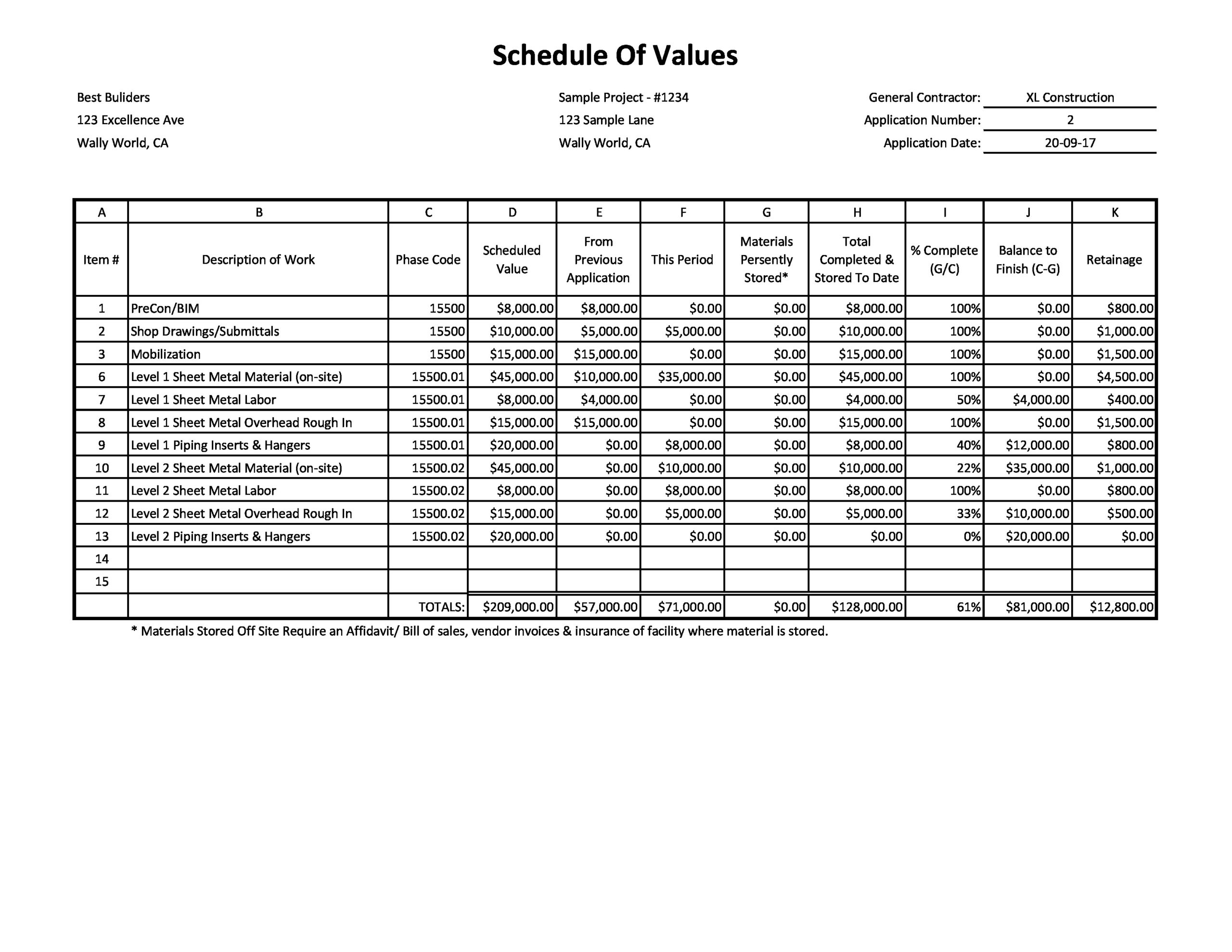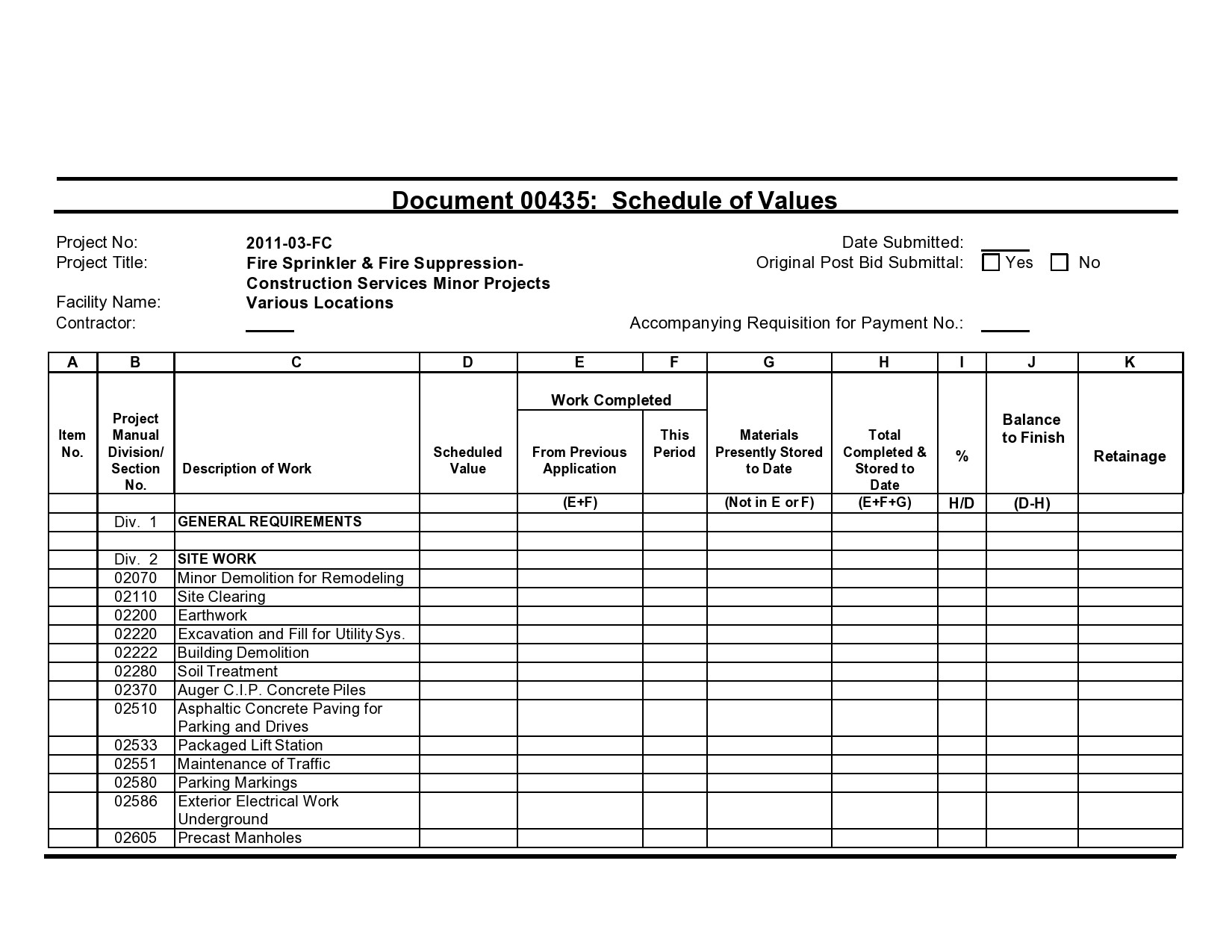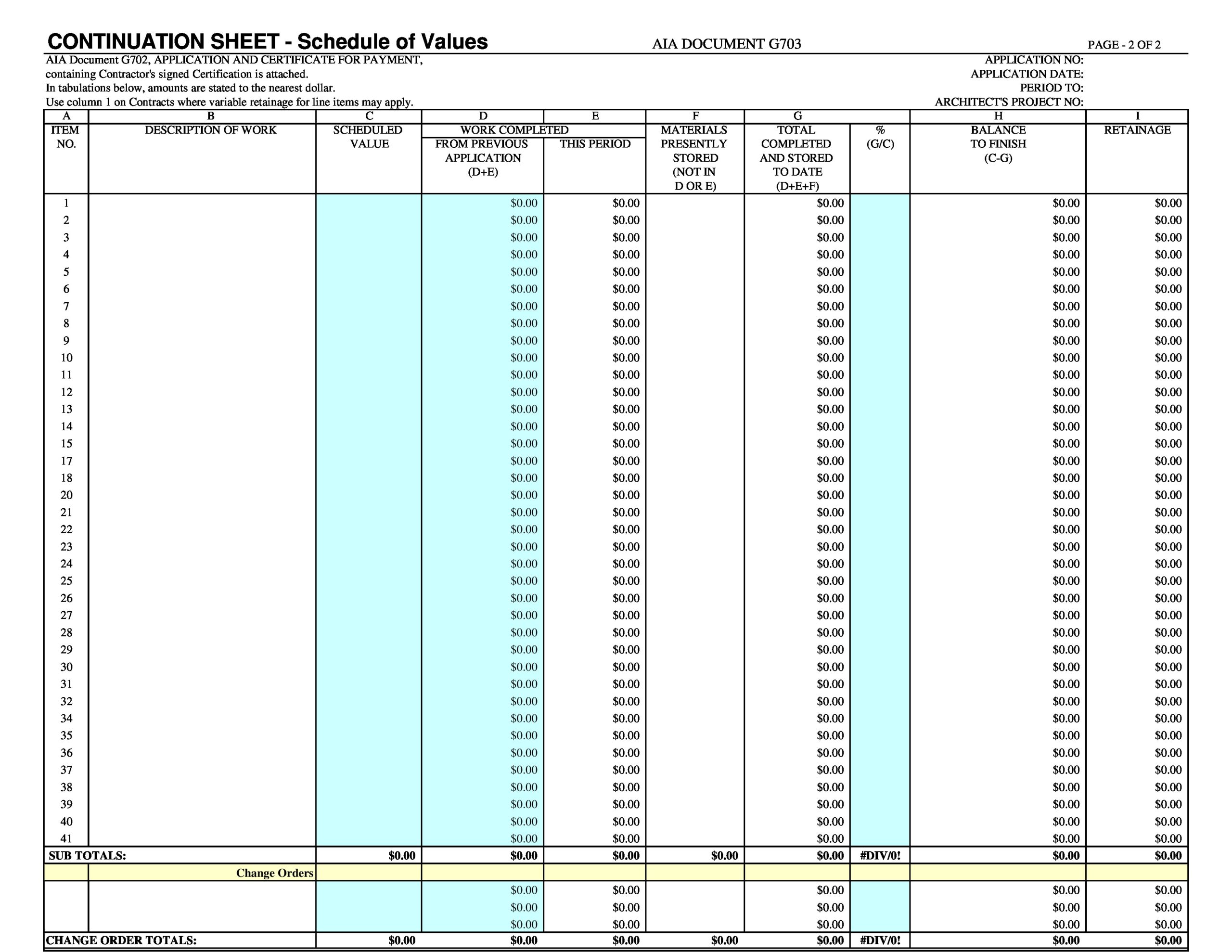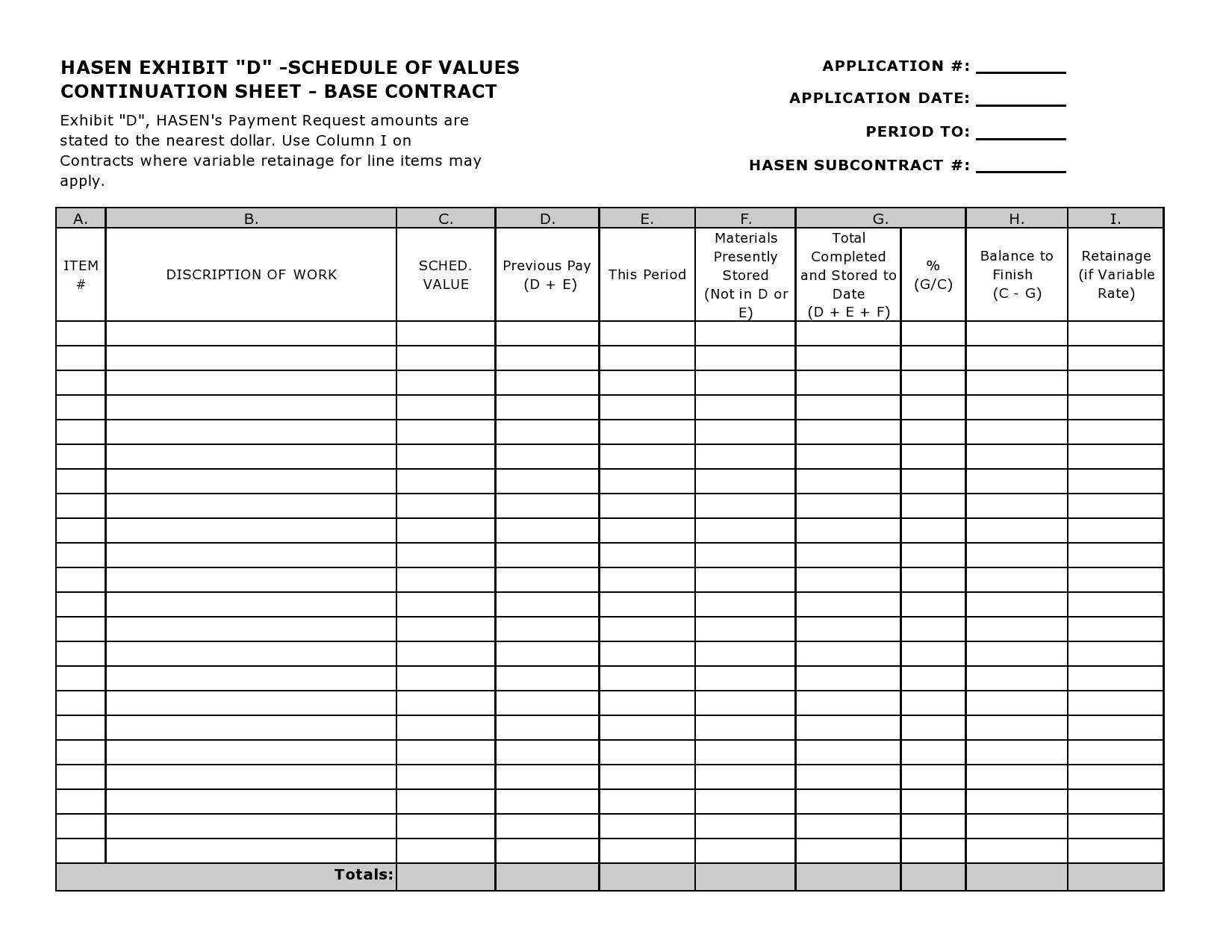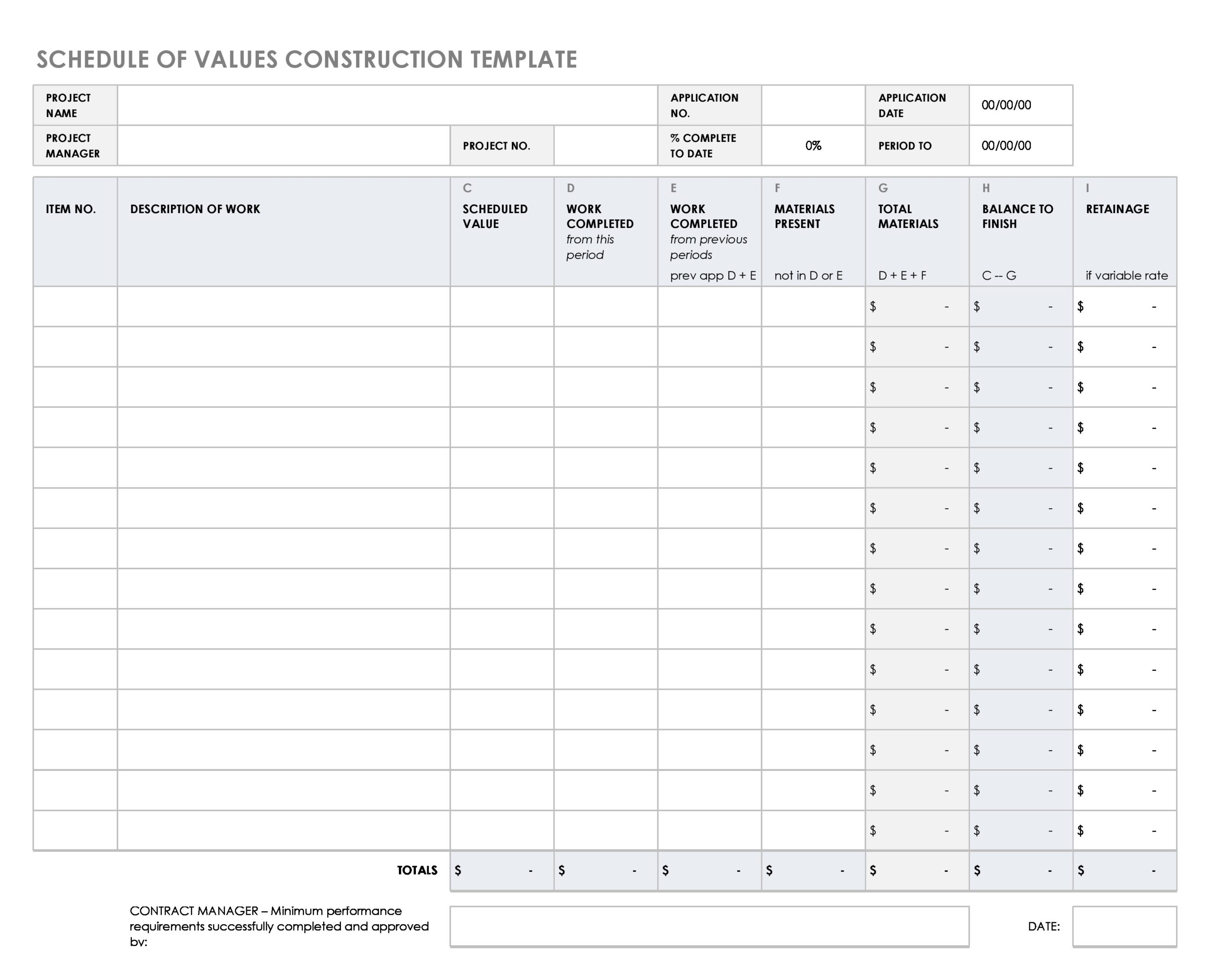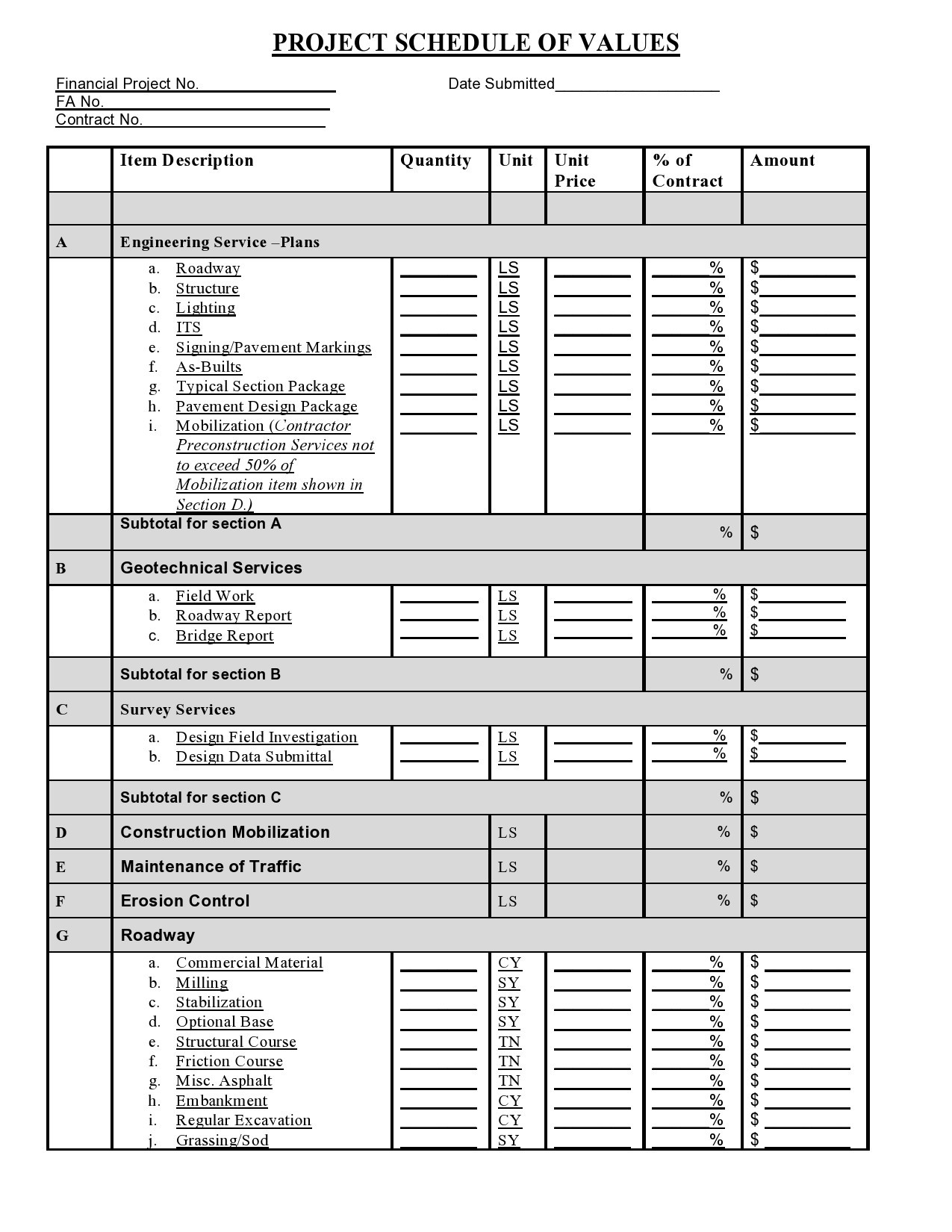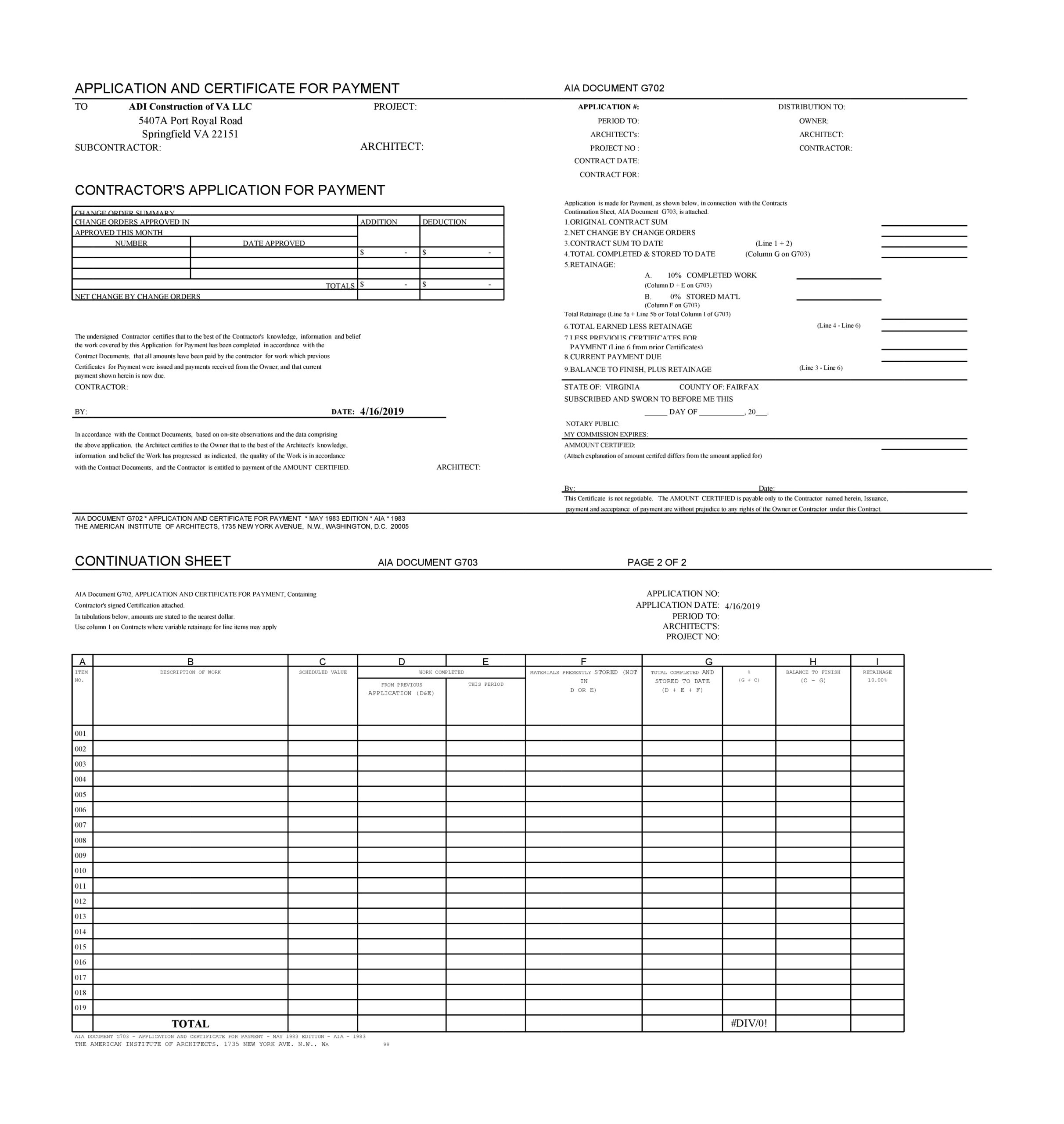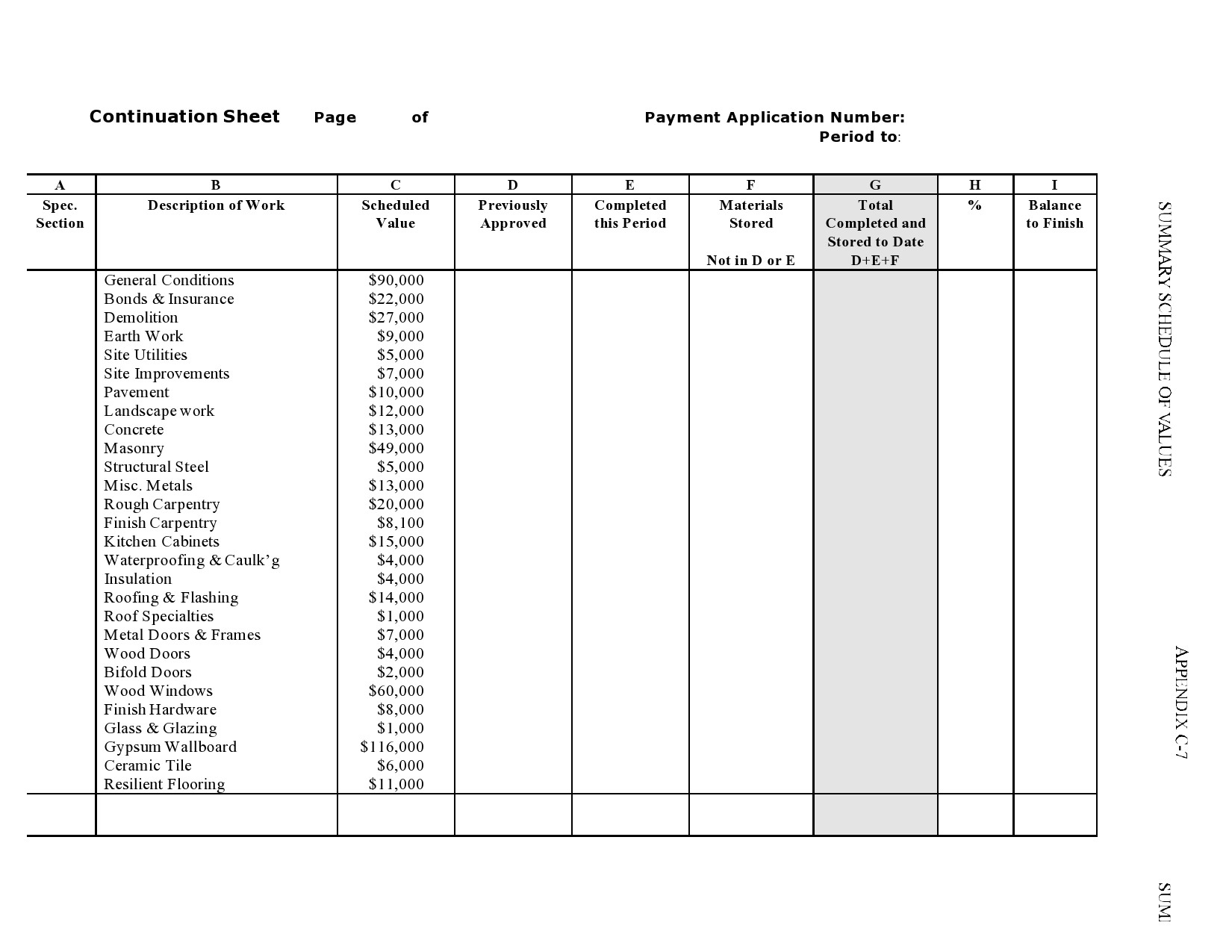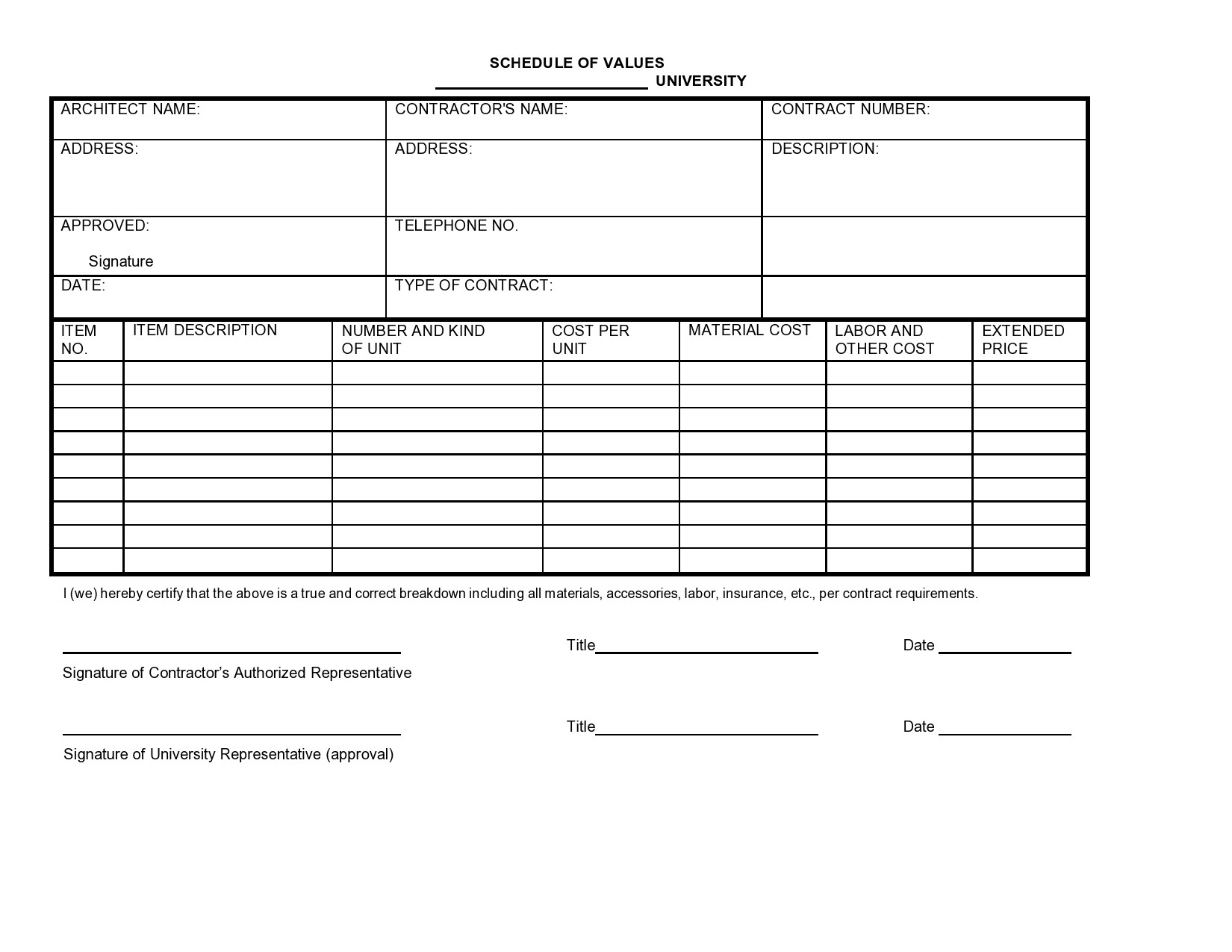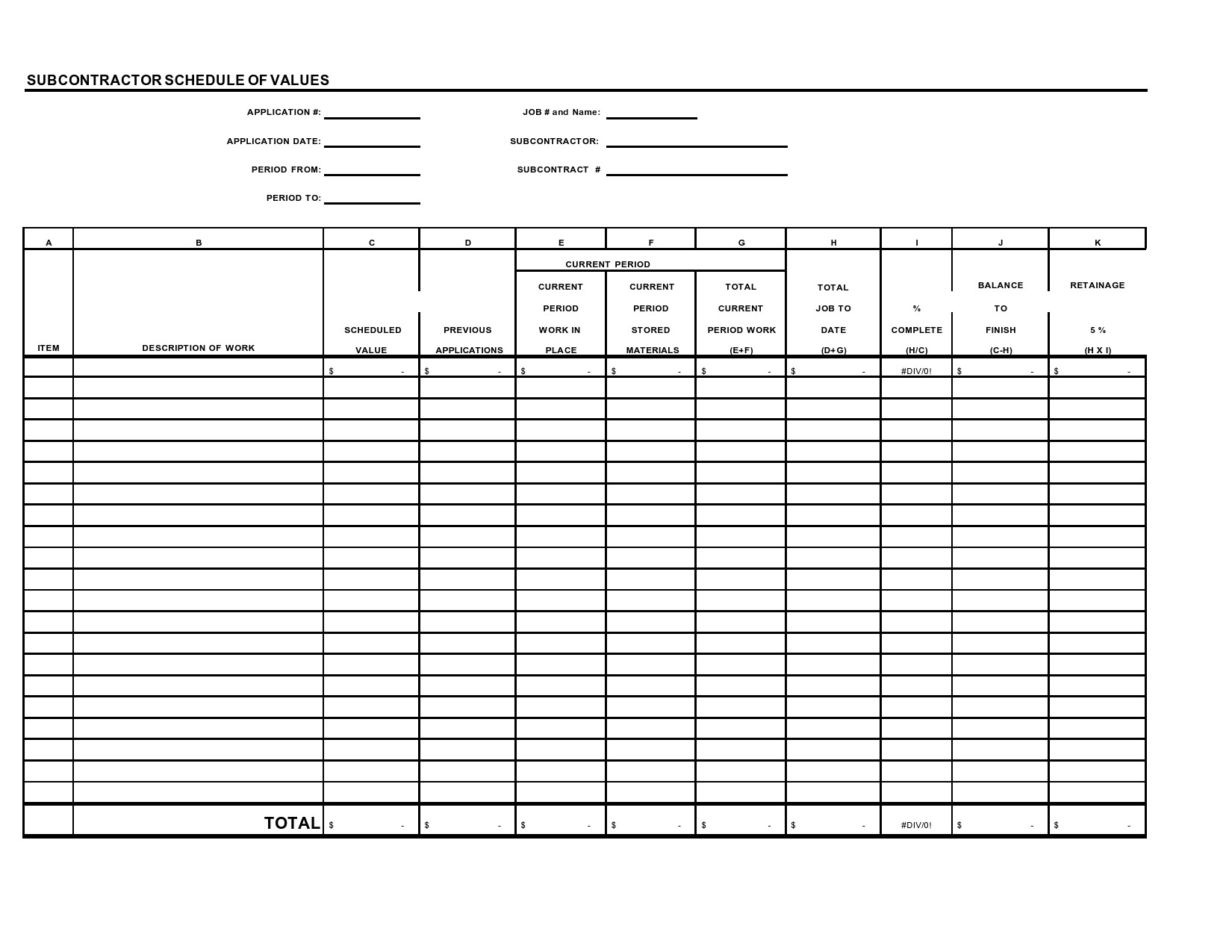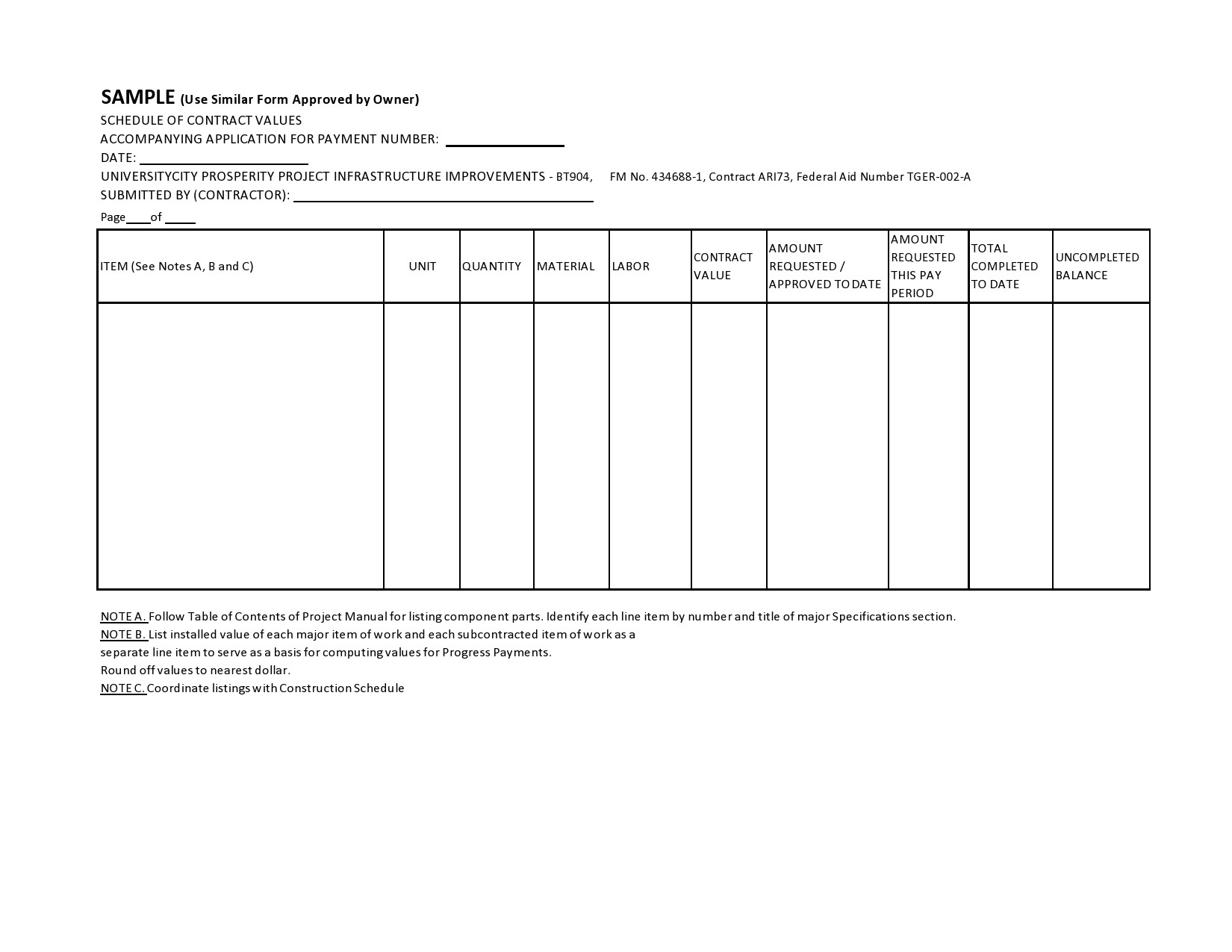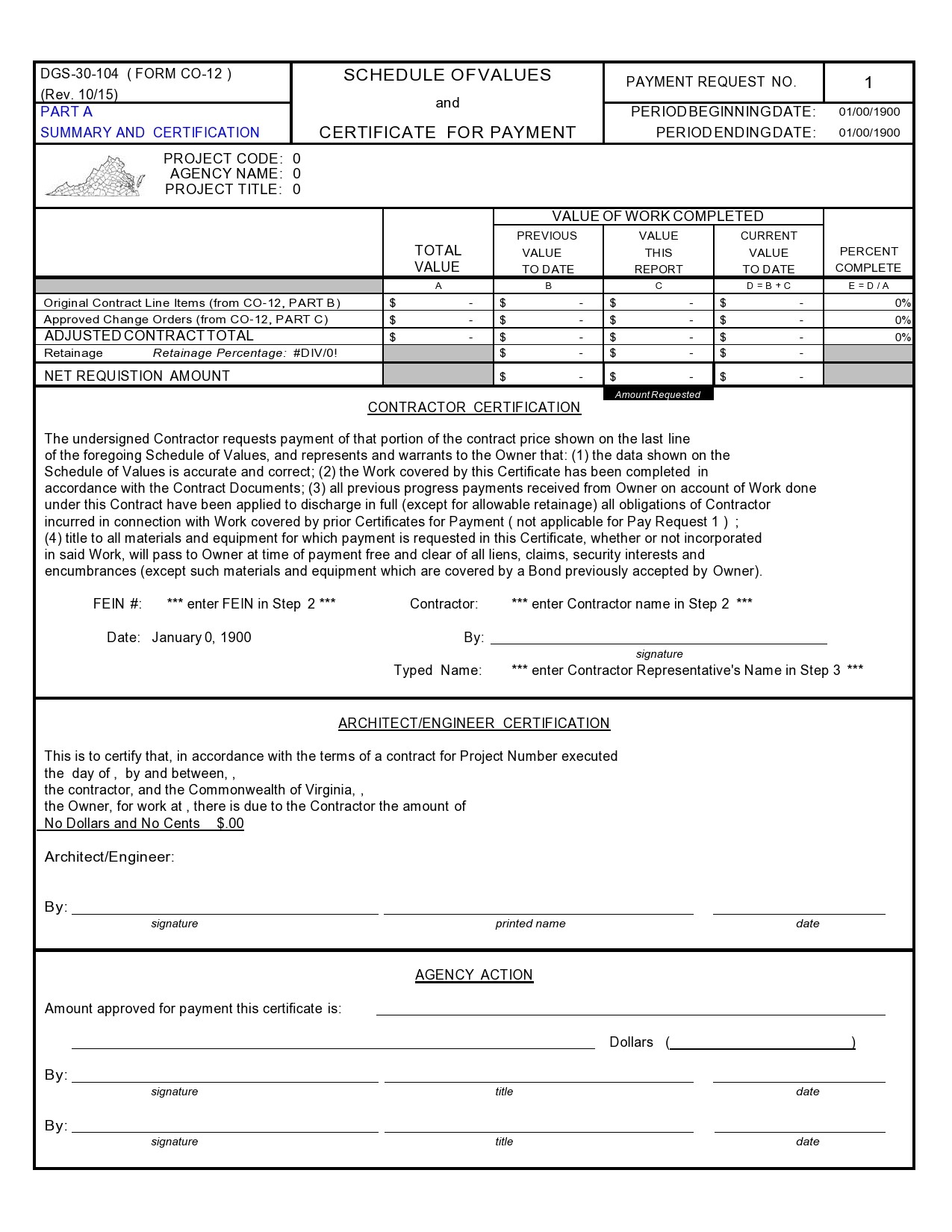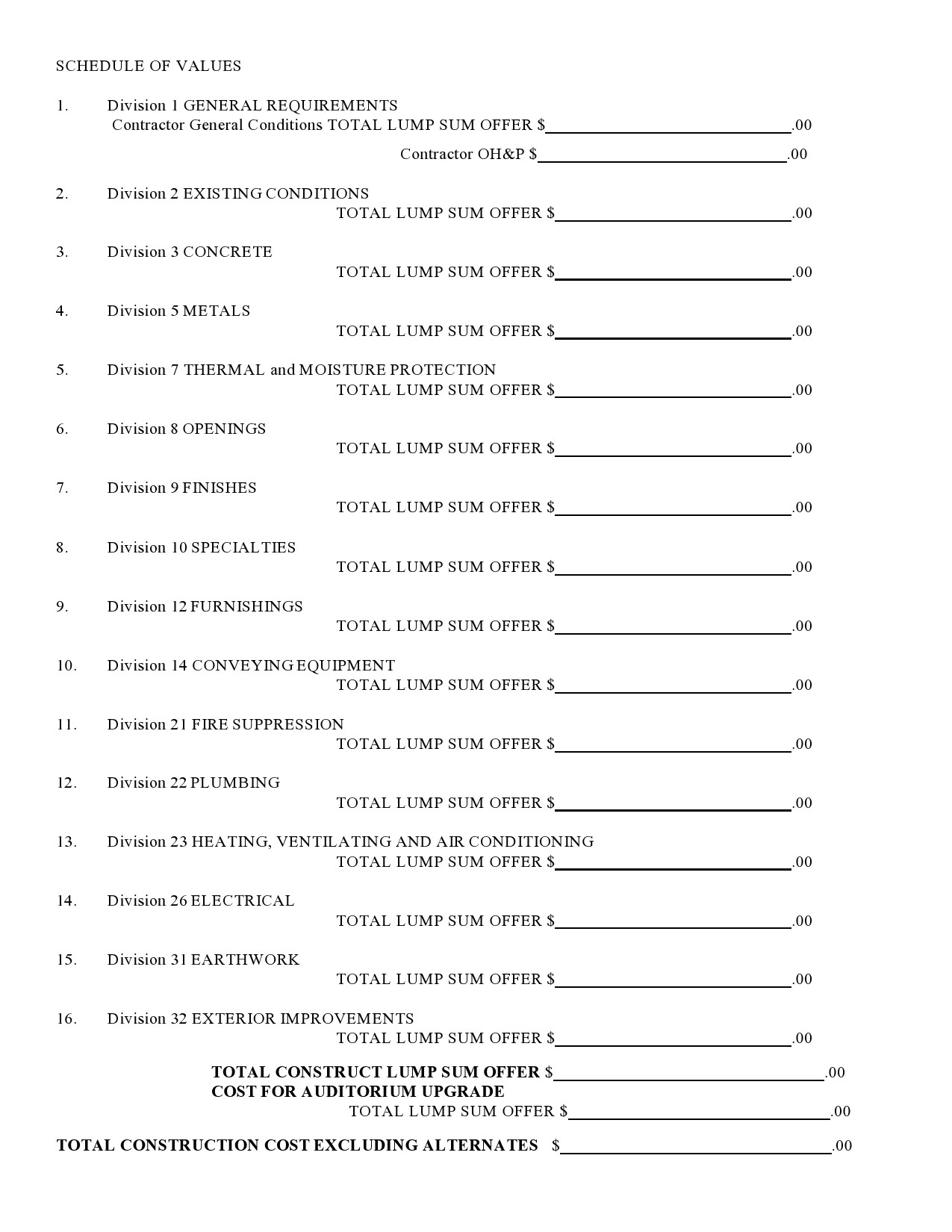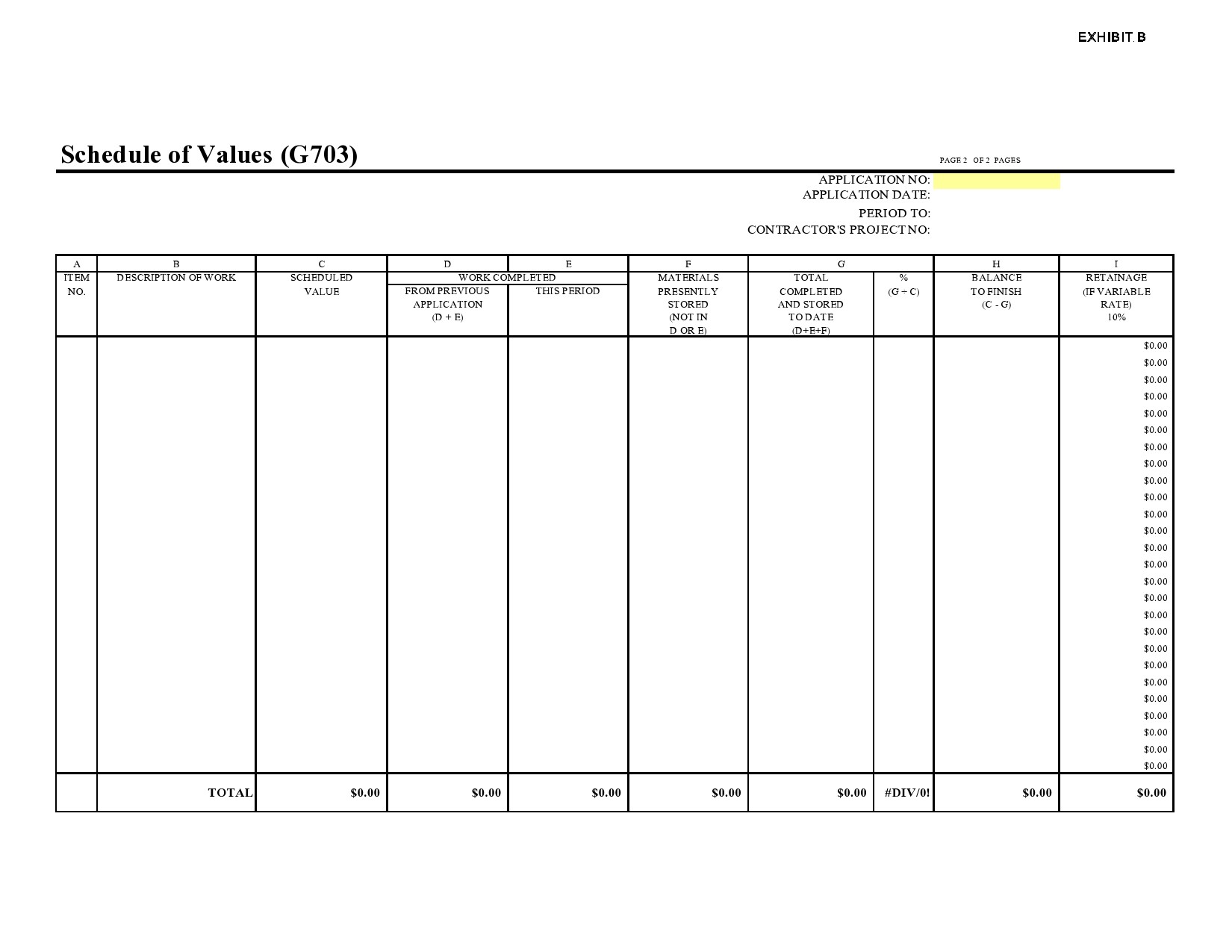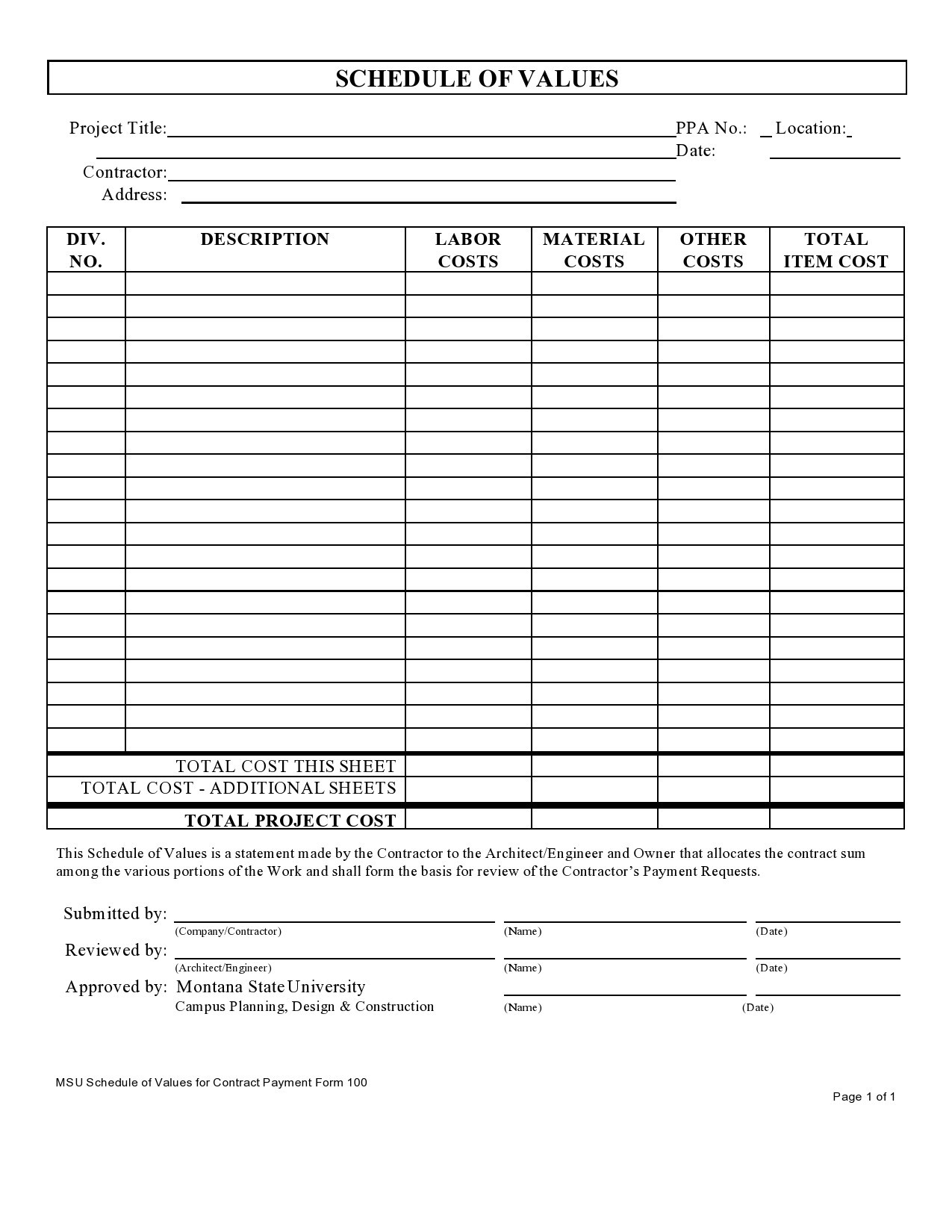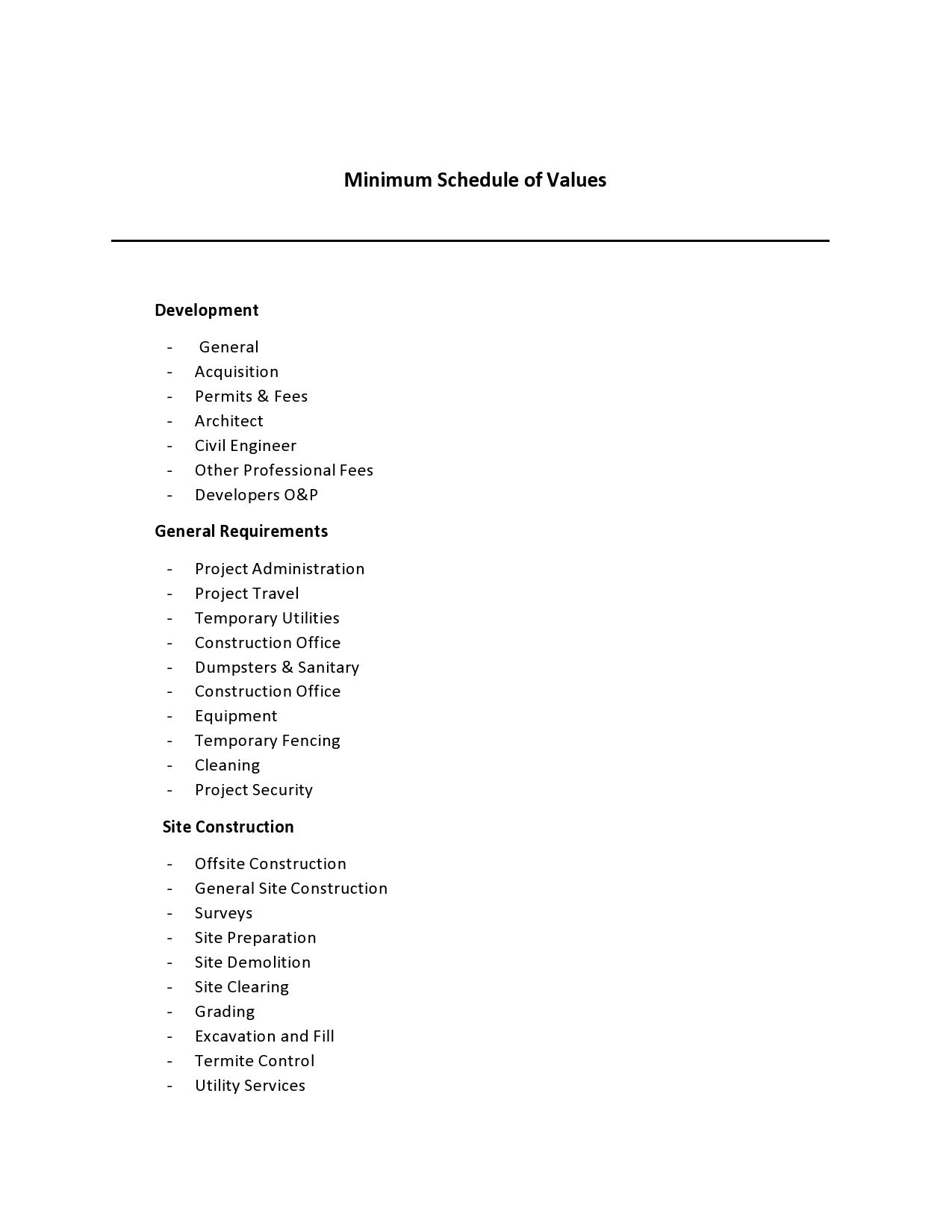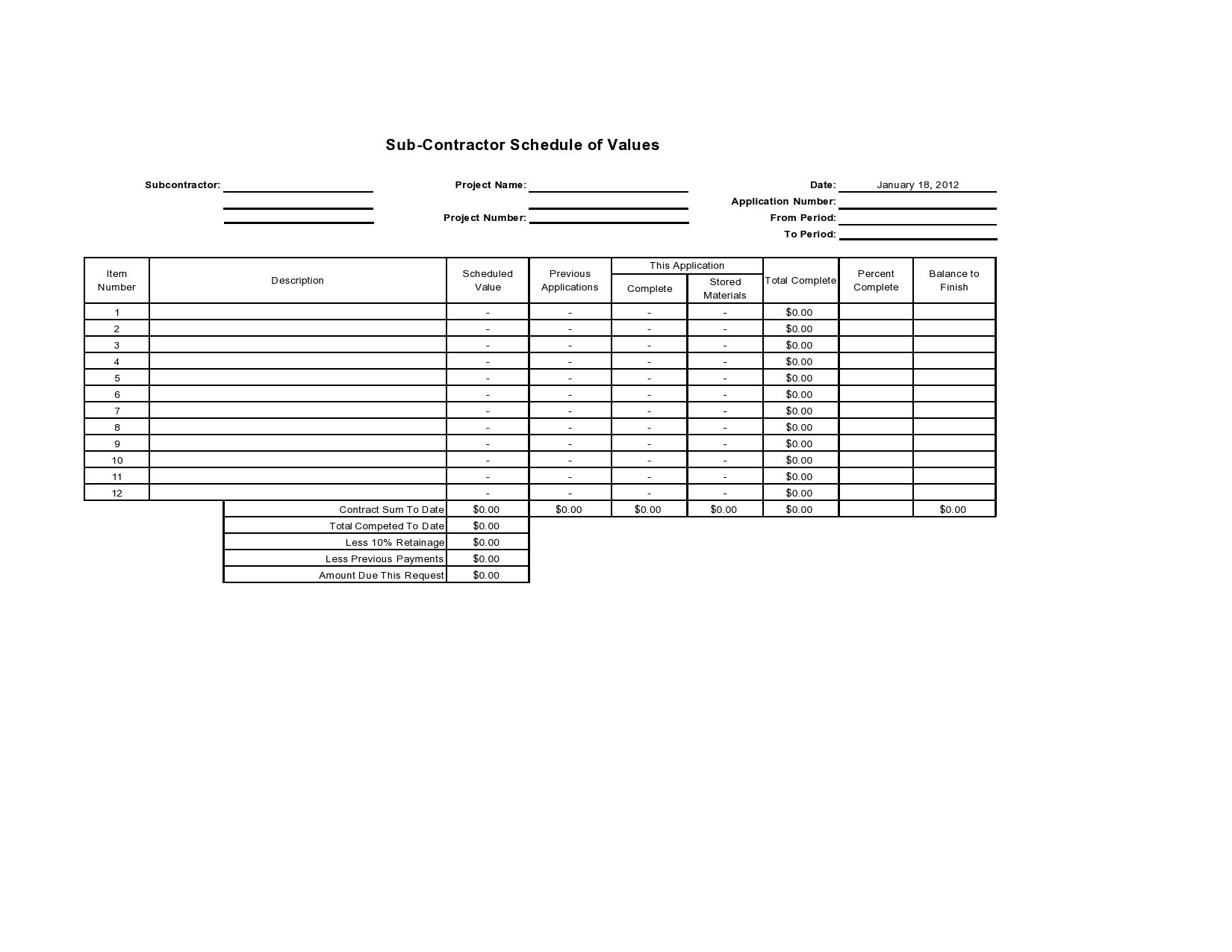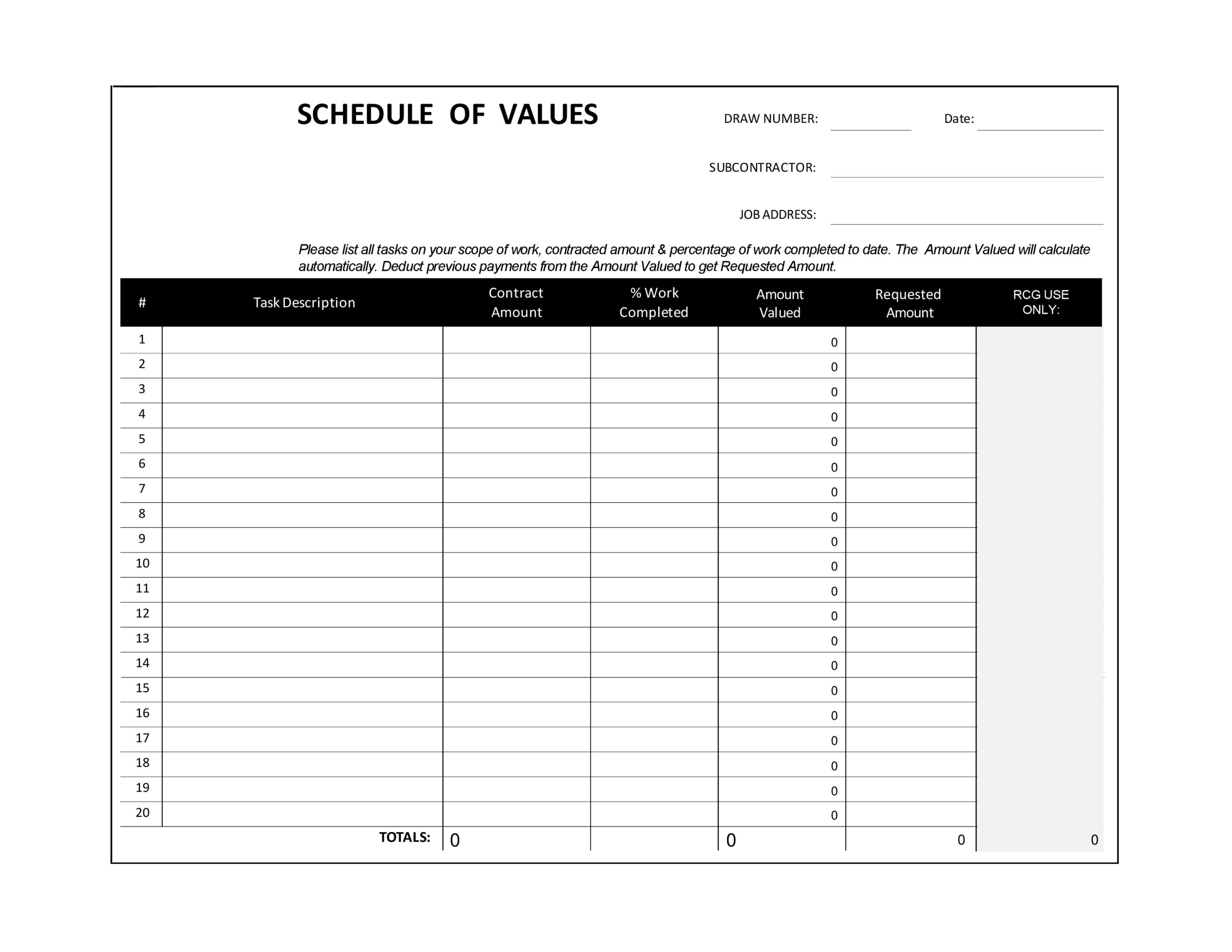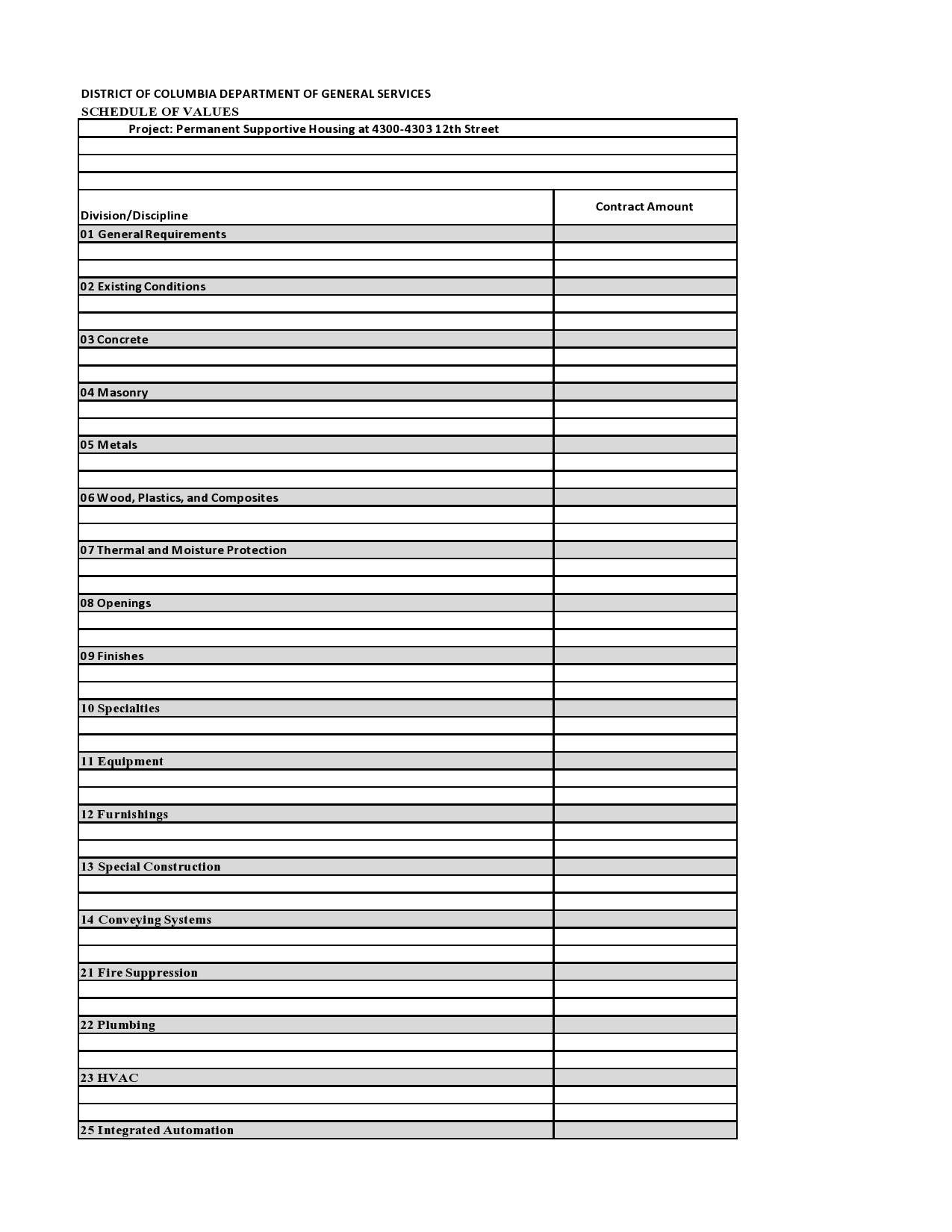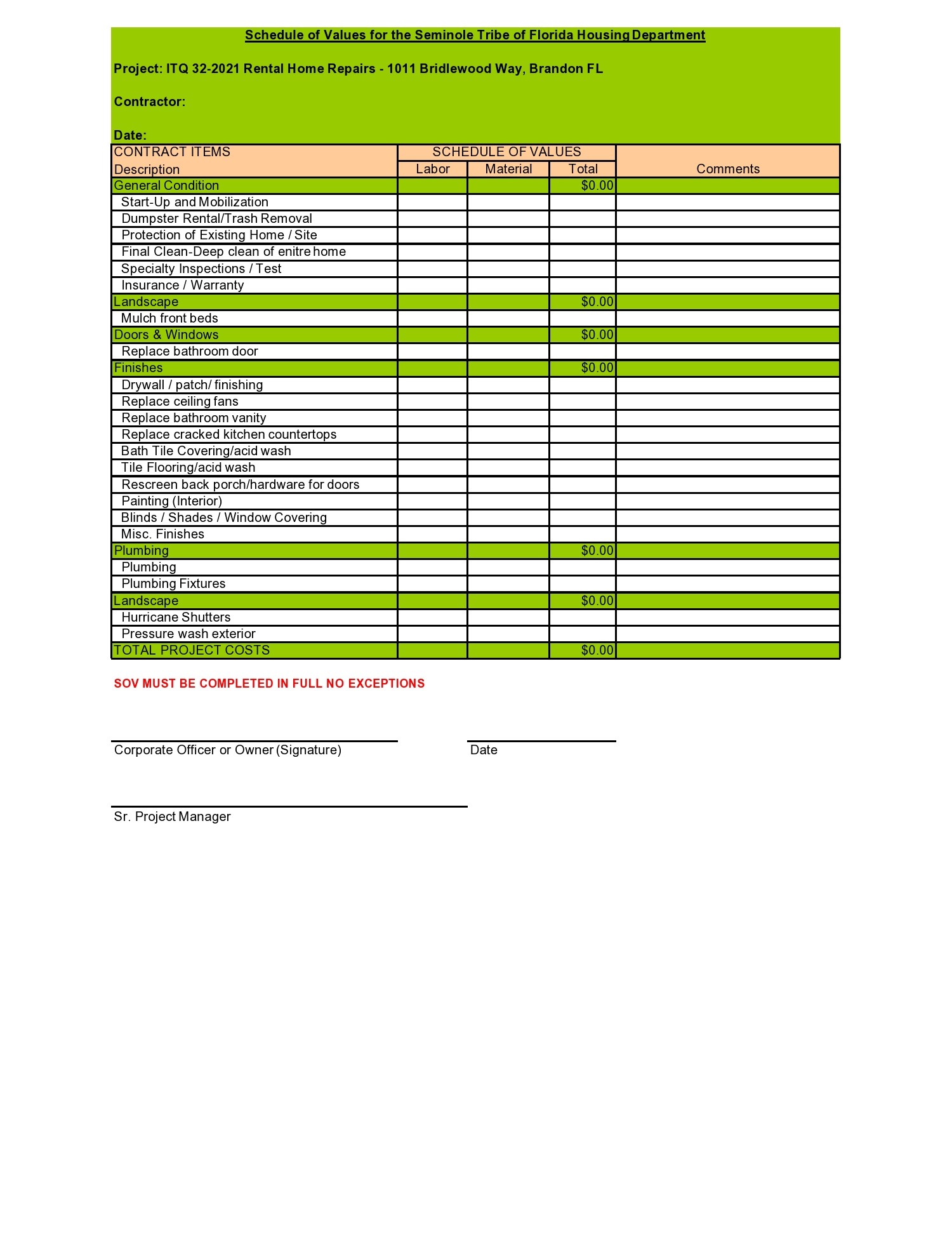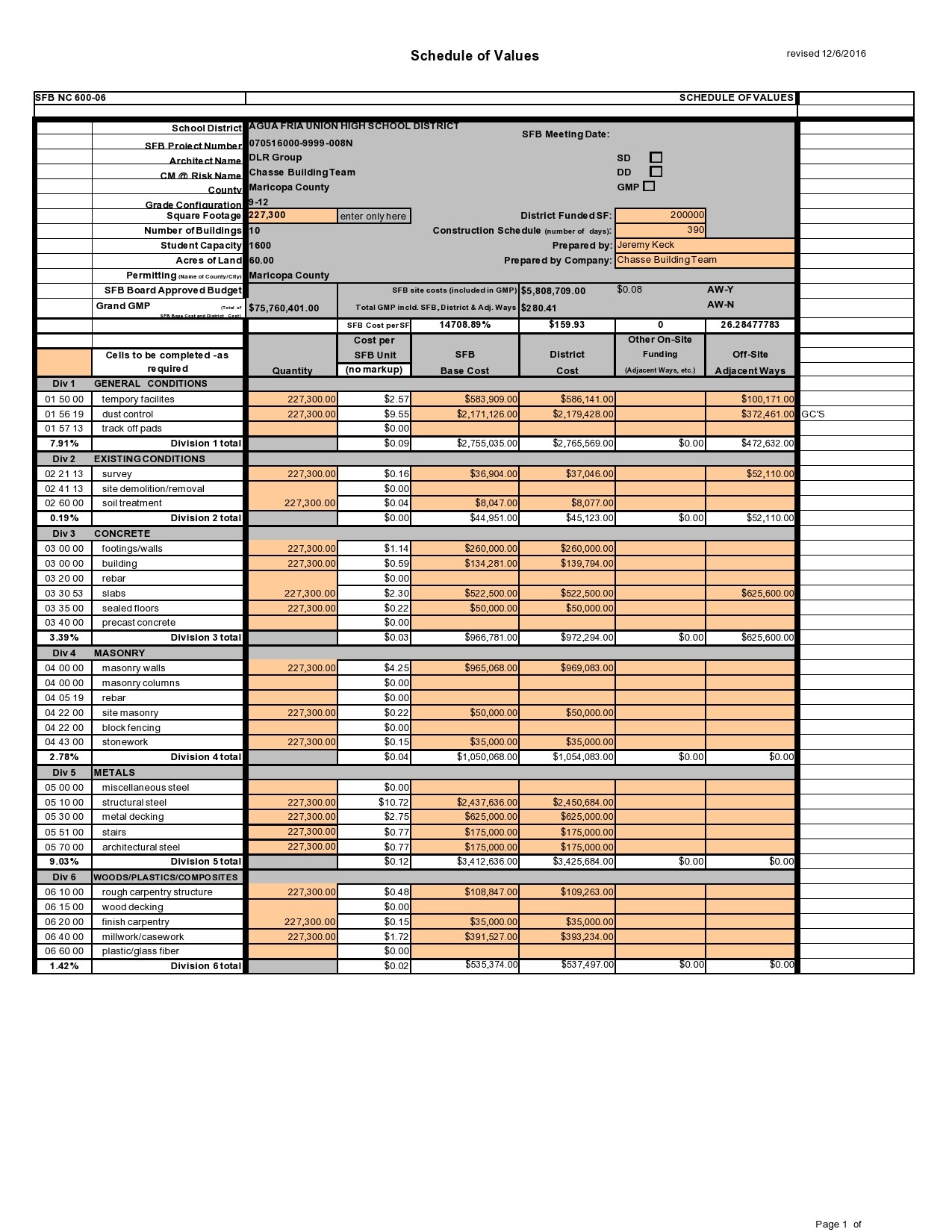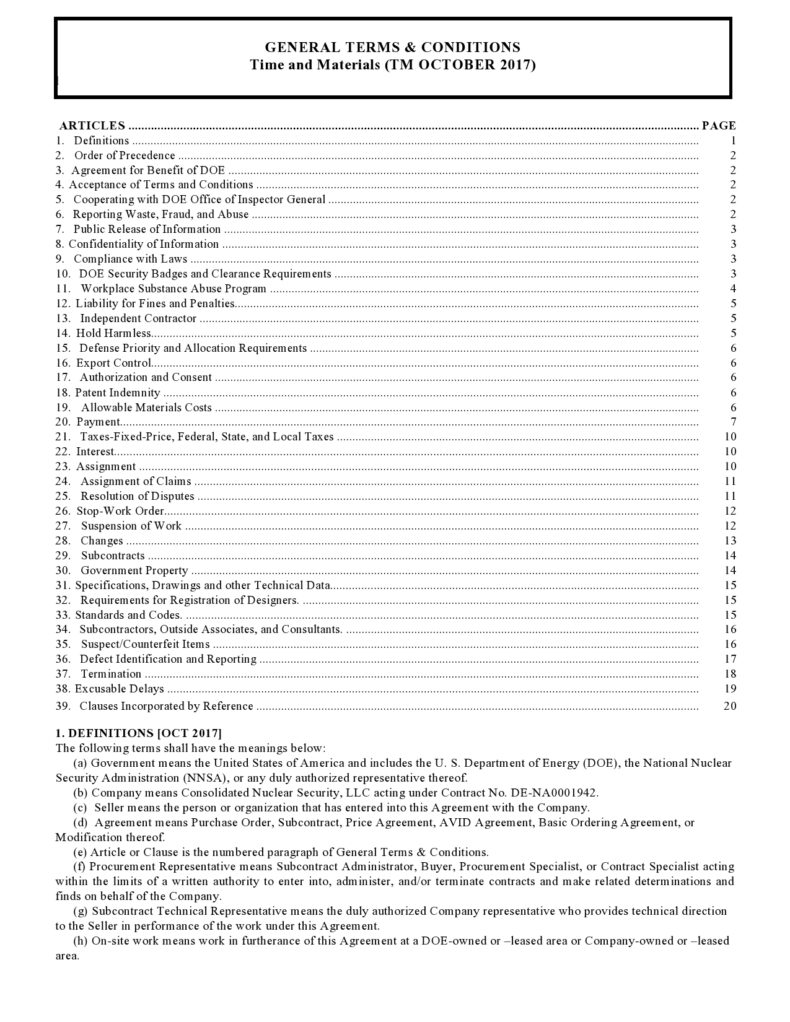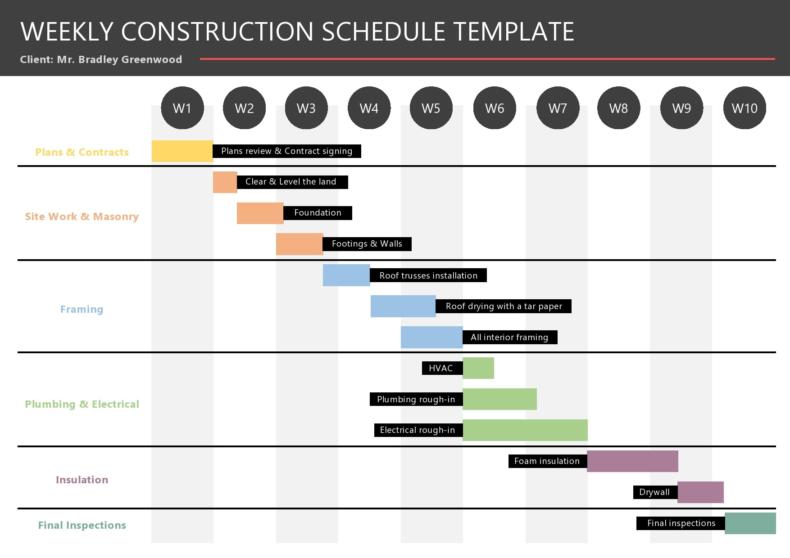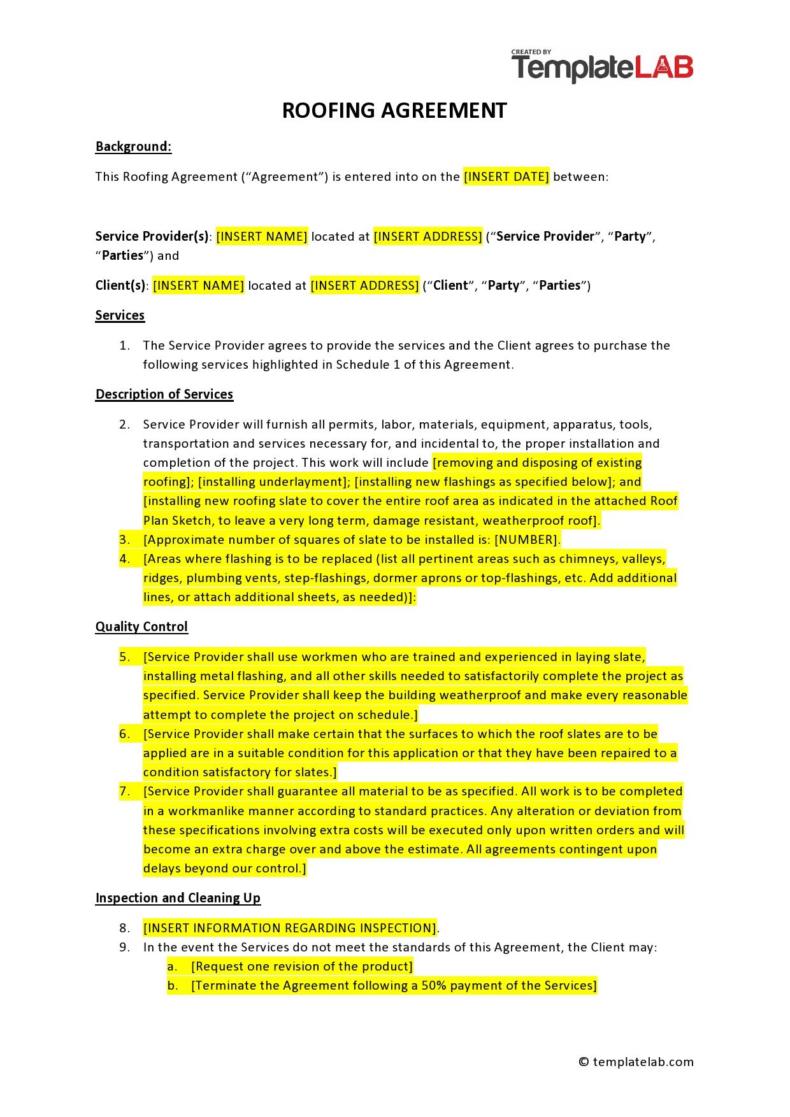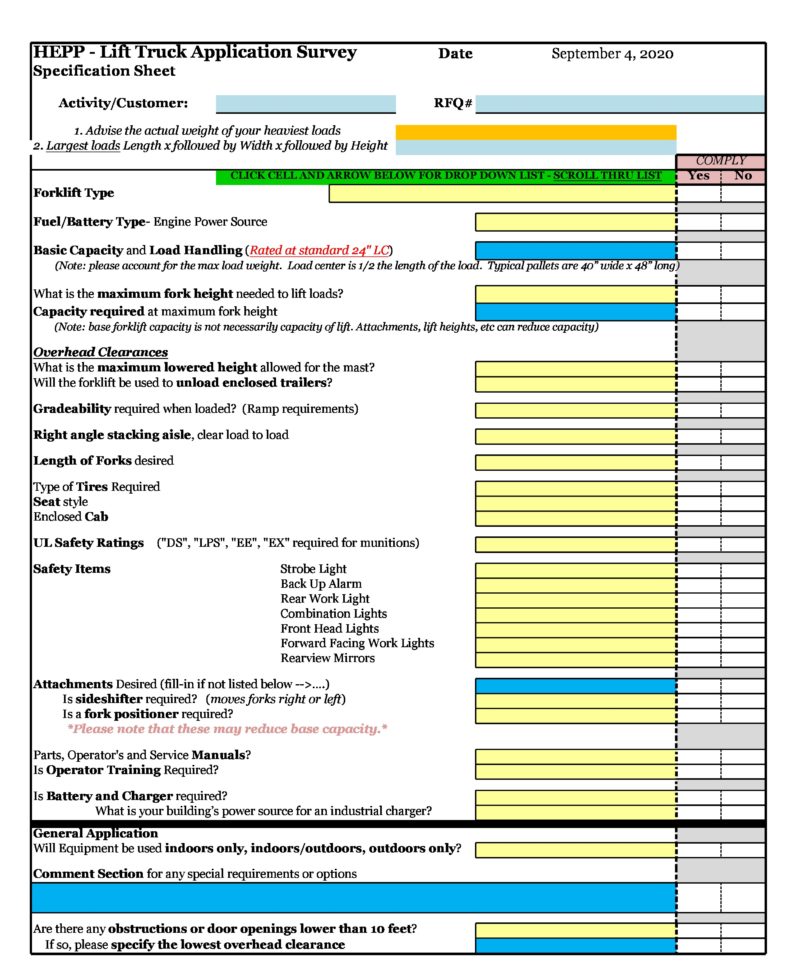Construction contracts involve several documents like the contract agreement, the bill of quantities, work scope, and the document of general conditions. Each document is important during the contract term and binds the contractor and the project owner. The schedule of values template details the cost of each phase of the project including finer details like the kind of work, things to be done, and the time within which it must be done. When all the work items are added together, they show the exact cost of the entire project.
Table of Contents
Schedule of Values Templates
What should be included in a schedule of values?
No construction project can run without money. Project engineers and architectural designers use a construction schedule of values to measure the projected cost of a project against the quoted value.
Without the schedule of values, the project could easily run out of cash and stall and thereby attracting long legal tussles between the project owner, suppliers of construction material, and the construction workers.
The schedule of values breaks down the entire project cost into bits that reflect project costs in phases and the items involved in each phase. Once a project phase is complete, the project managers can measure the cost incurred in that phase, make the necessary payments, and check if the balance at hand shall be able to keep the project progressing.
In most cases, large projects are paid in phases. The contractor must manage the resources well because the owner of the project will release the next payment once they get satisfied with the quality of work and timelines as contained in the project terms.
To ensure a smooth progression of any construction project, the contractor must include the following details in the schedule of values.
- The head
The head is the top part of the schedule of values template and should include:
Project’s name: the name of the project is given by the owner as contained in the contract document.
Project number:
Contractor’s name
Contract application number
Contract application date
Expected finishing period - The body
The body is the main part of the schedule of values spreadsheet and should include the following columns:
Item number
Each item of work must be numbered for easy identification by the project managers, auditors, and engineers. The numbering could take any form in terms of the number of digits used. You may use three digits like 001, 002, 003, and so forth, four digits like 5001, 5002, and so forth, or an even higher number of digits.
Work description
Work description gives details of works expected to be carried out in each phase like earthmoving works, piping and electrical installations, demolitions, and so on.
Scheduled value
The scheduled value contains the amount of money allocated to each item of work covering the entire project and can range from a few hundred dollars to thousands or ten thousand, depending on the amount of work involved.
Completed works
The project progresses by phases making the inclusion of completed works important in measuring the amount spent against the projected budget. The completed works column can further be divided into two columns: the previous schedule of values to show how much the spending in the previous phase and the current schedule of values to show the amount allocated for the current or ongoing phase.
Materials in for non-completed work
This item shows the value of materials in the project’s store for easy accountability. Non-completed work materials mean the money shall be used either in the current phase or in the next phase of the project.
Materials in store for completed work
This column shows the value of money spent so far in all the previous phases of the project and it is used to calculate the progress of the project in terms of percentages.
Percentage of completed items of work
This column shows how far the project has progressed, making it easier to know the percentage of the remainder. The project owner and the contractor can be able to measure the amount of time left to the project completion.
Balance to finish
Balance to finish shows the amount of money available until the completion of the project. From here, the contractor can measure if the money will be enough to complete the project or he might need to cut on some costs or arrange for further financing.
Retainage
Retainage is the amount of money held back as an incentive to the contractor until the project is complete.
Totals
Total is a row showing the total of each of the above-discussed items.
Construction Schedule Of Values
How do you fill a schedule of values?
The schedule of values spreadsheet is easy to fill in once the columns and rows have been drawn and marked well. The schedule of values template contains about ten columns and as many rows as there are items to fill in. your quantity surveyor can help you calculate the quantity needed for each item.
- The item’s number
Fill in the number allocated to each item without having to follow the numbers in a serialized way. You may give an item like laying of foundation number 001, excavation number 002, electrical works number 0555, and so on. Allocation of numbers to each item of work makes referencing easy instead of searching by words or names that can sometimes be challenging. - Enter details of work
Enter the work details as per the corresponding work number. For example, item number 001 is for the item of work laying of the foundation and item number 002 is for electrical works.
Each item of work must correspond with the item number to ensure there is no confusion on the amount allocated for each item. Your schedule of values form can have as many items as possible, depending on the size of the project involved. - Enter the values
The scheduled values are governed by the amount each item is likely to consume in the entire project. If windows and panes on item number 010 will consume $8,000 for the whole project, enter that amount as the allocated budget for windows and panes.
The values in the schedule of values spreadsheet are allocated according to the contract value and their purpose is for budget allocation to avoid working beyond the budget. - Fill in the details of work completed
Upon the completion of work in each phase, fill in your construction schedule of values, which equals the amount each work item consumed. If item number 001 – laying of foundation consumed $5,000, enter that in the previous.
Excavation works (number 002) could have consumed $3,000 and is entered the same way as item number 001. - Next, fill in the values of the current phase that is starting or ongoing
If the excavation work and foundation laying are fully complete, fill in the values as zero, followed in the next row with the values allocated for the current phase. - Stored materials for non-completed work
In this column, calculate the value of the material in the store for work that is ongoing. If work item number 006 – cement has a value of $200, enter that amount. It will help you know the quantity to order to avoid wastage. - Fill in the total value of material stored for completed work.
This value is achieved by adding the amount in the previous phase plus the amount in the current phase plus the value of stored material for non-completed work. - Calculate and enter the percentage
Mention the percentage of completed work against each item of work by taking the total expenditure for the particular item of work divided by the total estimated work value multiplied by 100.
For example, item number 10 – windows and panes were allocated $8,000 for the entire project and the total expenditure currently stands at $5,000. To calculate the percentage of completed work, take $5,000/$8,000 = 0.625 x 100 = 62.5%. - Calculate and enter balance to finish
In the schedule of values form, the balance to finish is calculated by the total scheduled value minus the total amount spent to date.
For example, we use the same item number 10 – windows and panes allocated a budget of $8,000 and the amount spent to date is $5,000. You take $8,000 – $5,000 = $3,000 and this is the value of balance to finish. - Calculate and enter the retainage percentage
This is calculated by taking the value of the total completed stored to date x 10%. For example, the total value completed to date for windows and panes is $5,000 x 0.1 = $500 and you enter that as the retained percentage.
Schedule Of Values Forms
Why is a schedule of values important?
A smooth cash flow is important in the life of a project. The schedule of values form helps the project owner and engineers get a quick overview of the budget expenditure against the total allocation.
By getting a quick overview, project owners and contractors can manage their bills effectively to keep the project running. It becomes easy to know what has been spent in the completed project phase and what to allocate for the current phase.
Every contractor works with profit margins in each project and the schedule of values spreadsheet helps the contractor project how much profit they are likely to get from a project and thereby adjust the budget accordingly.

